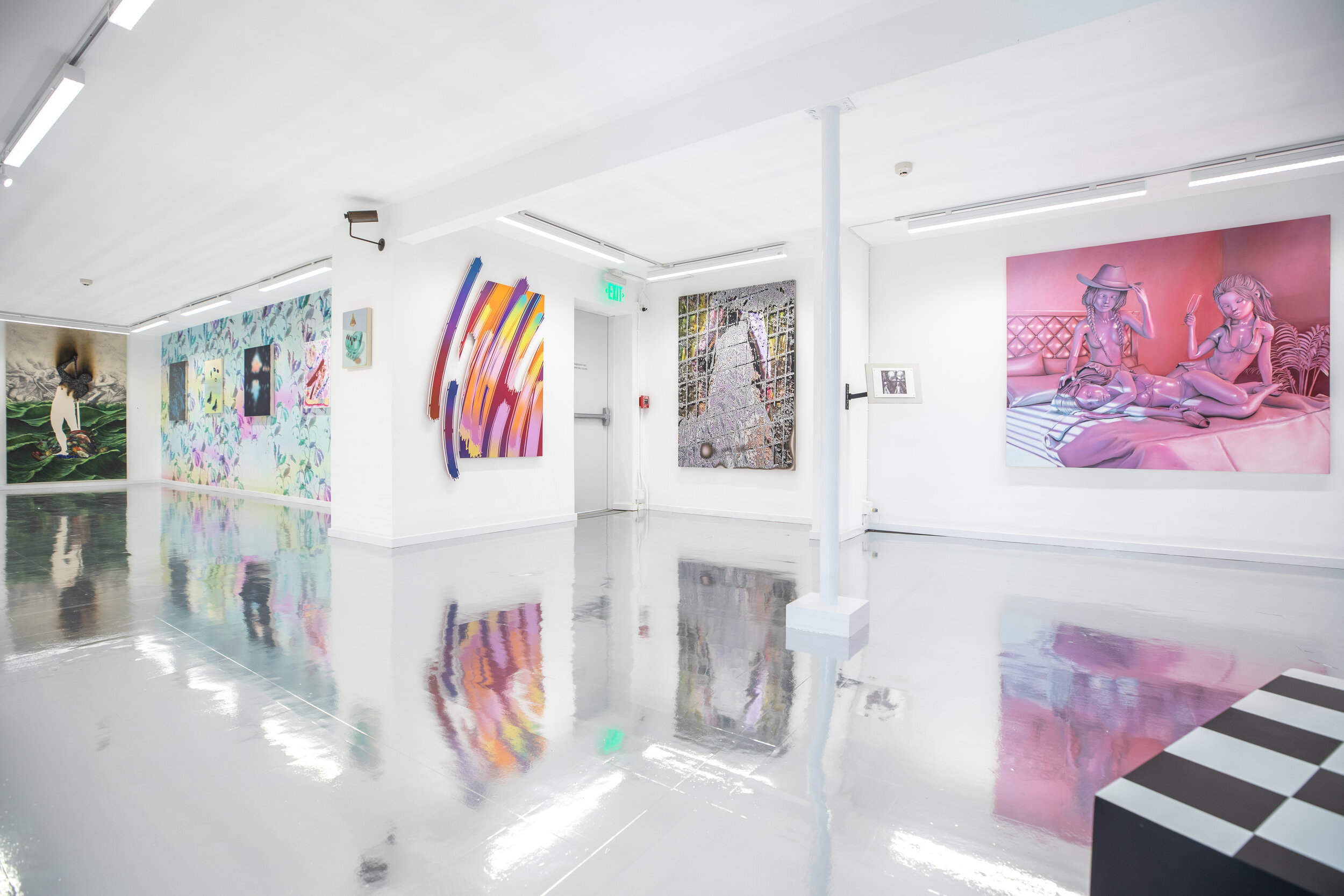
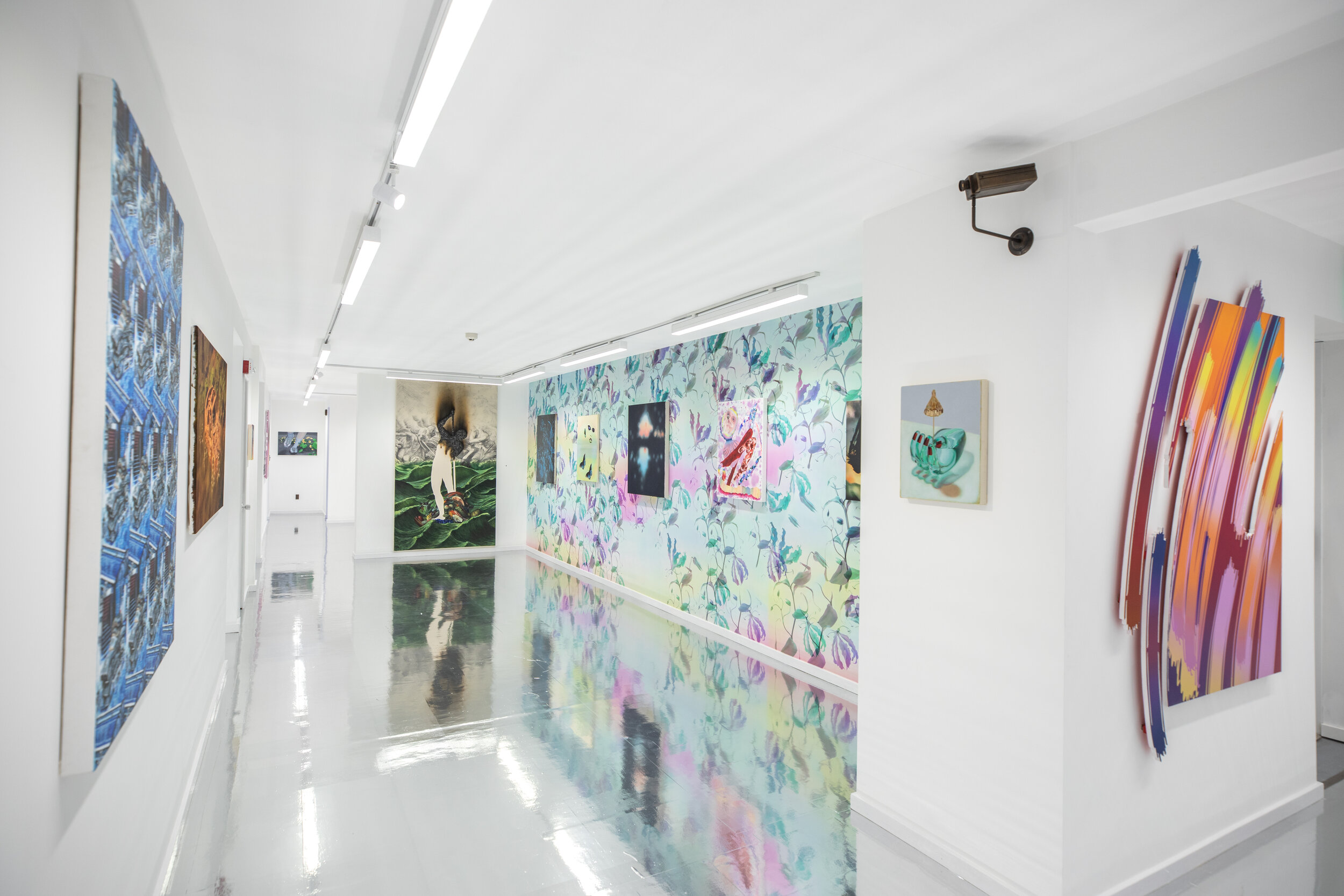
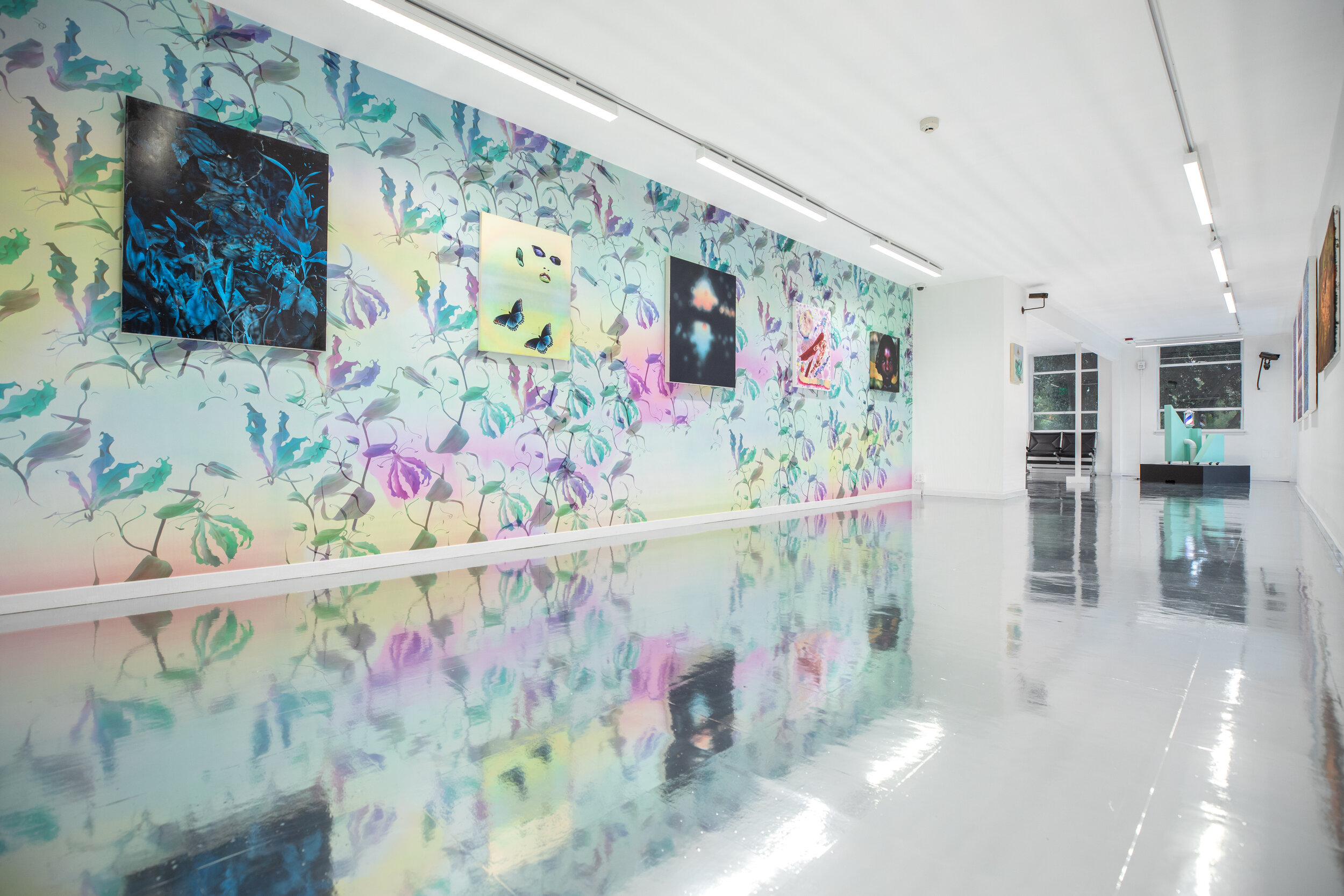

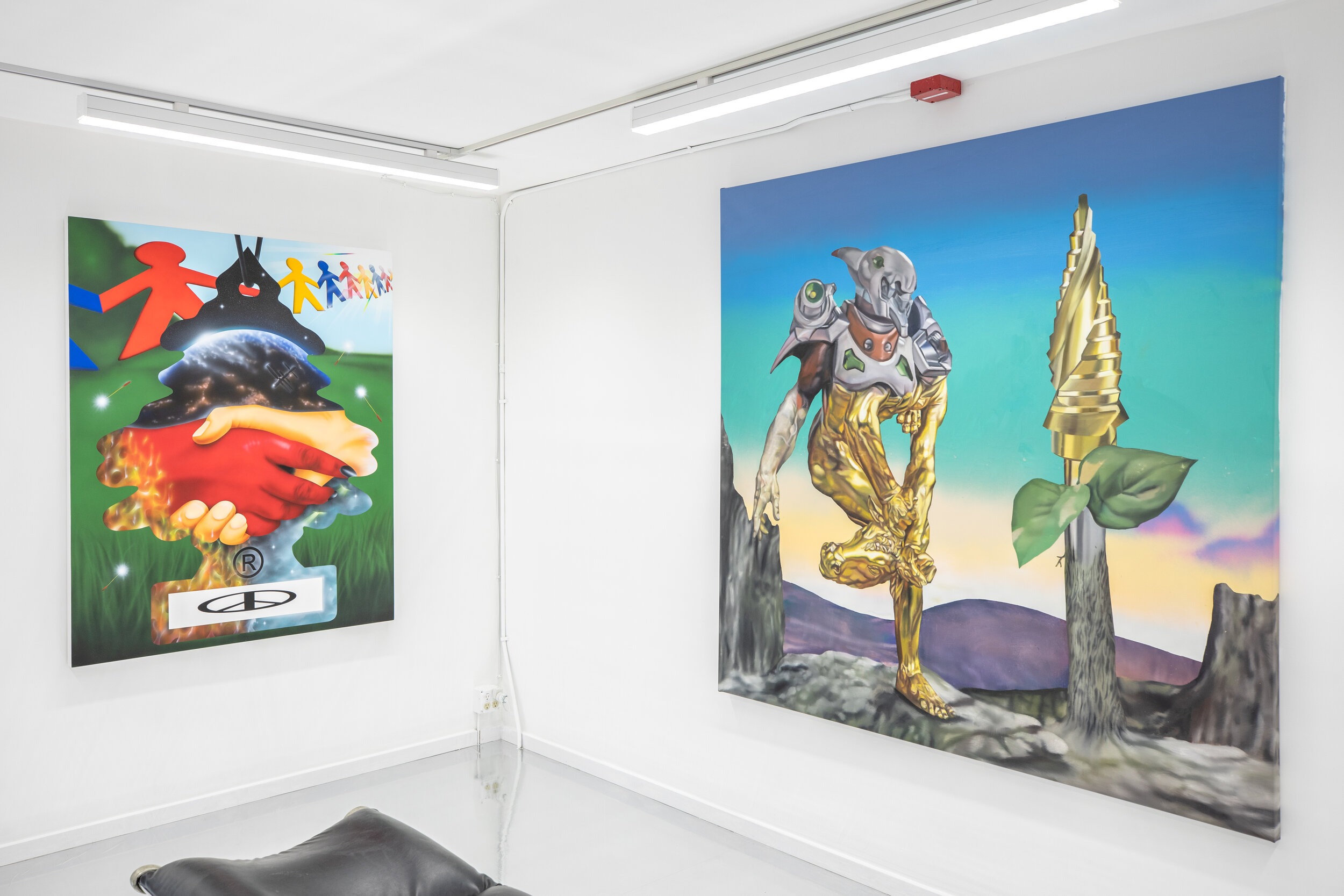
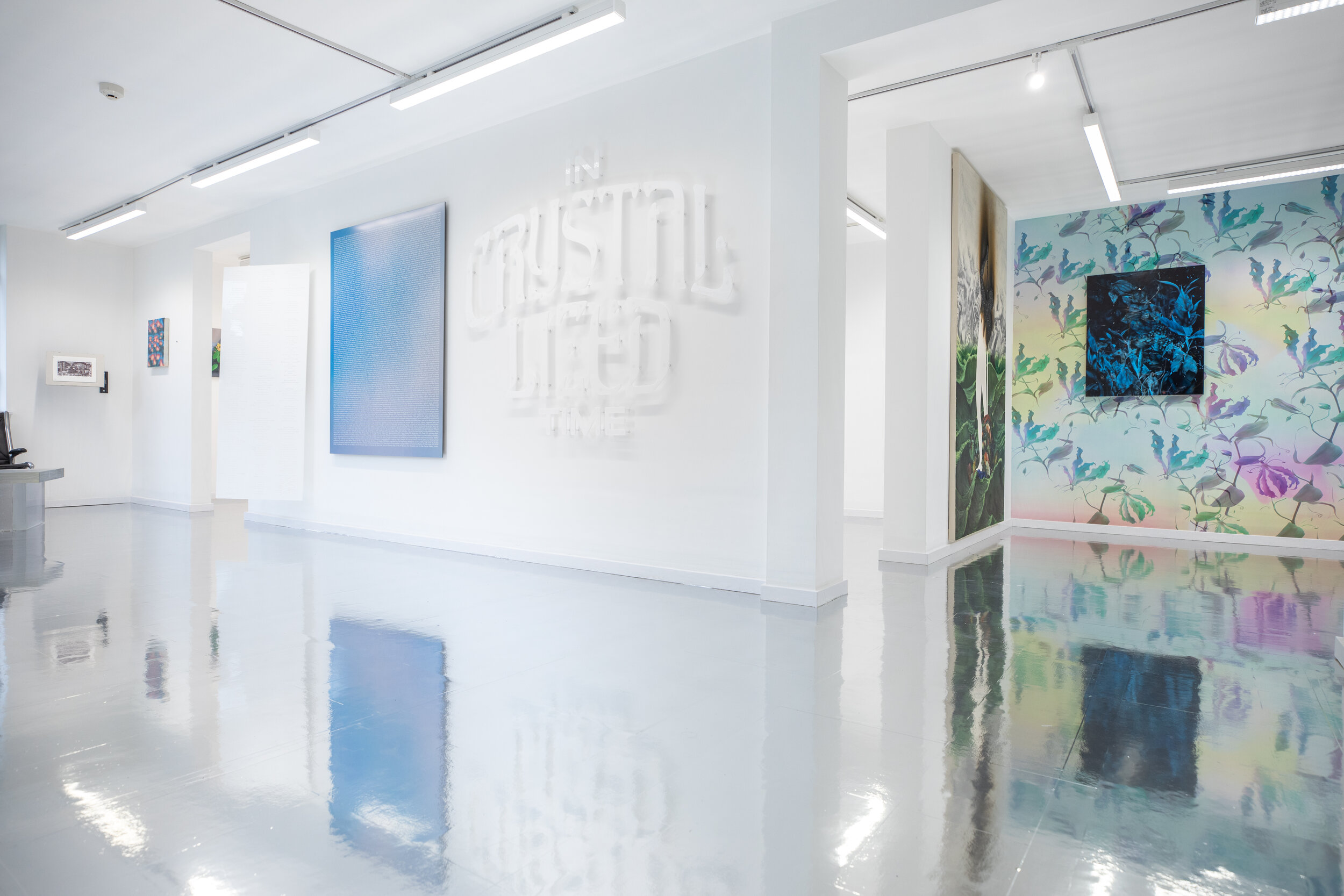
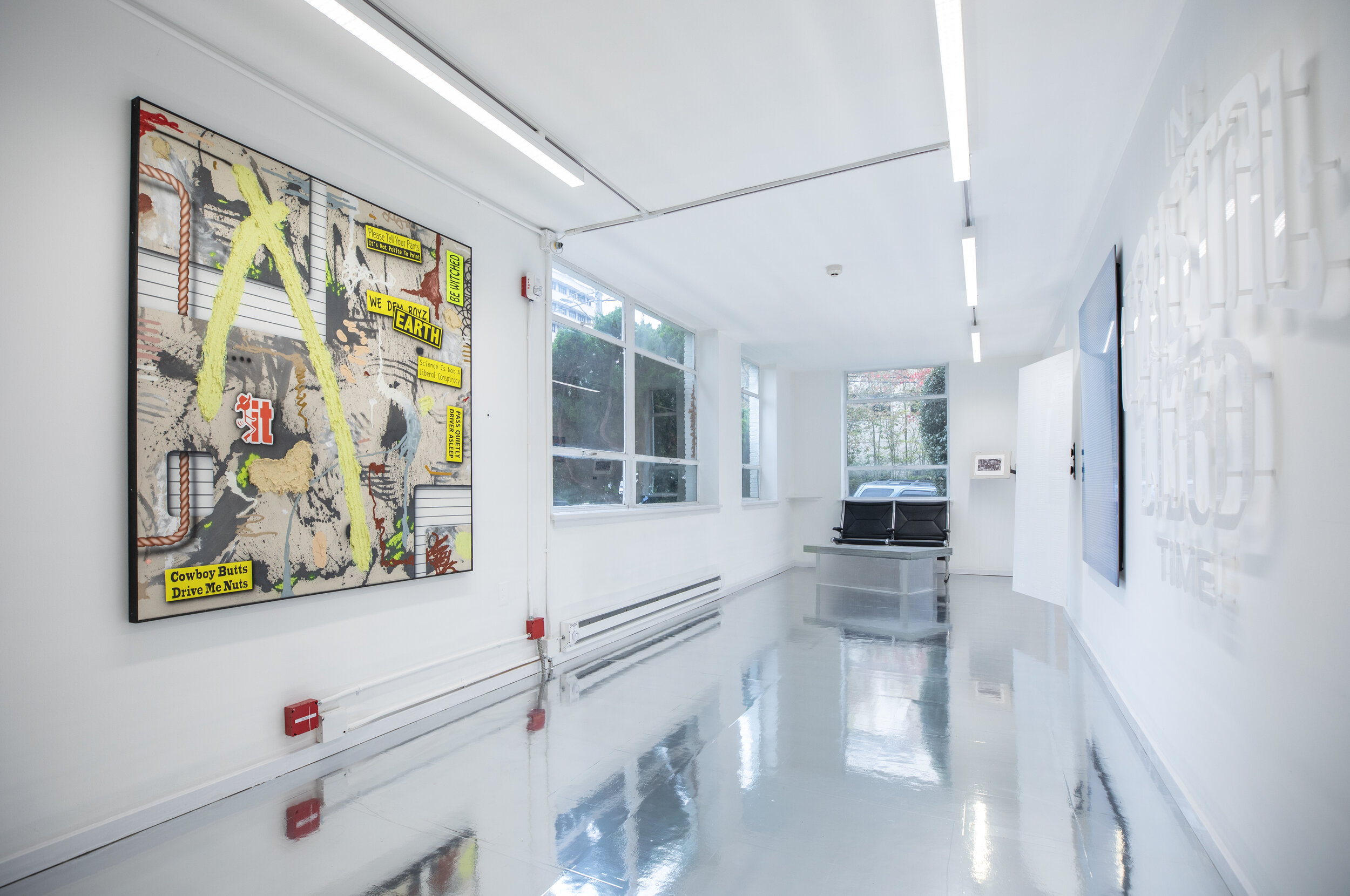
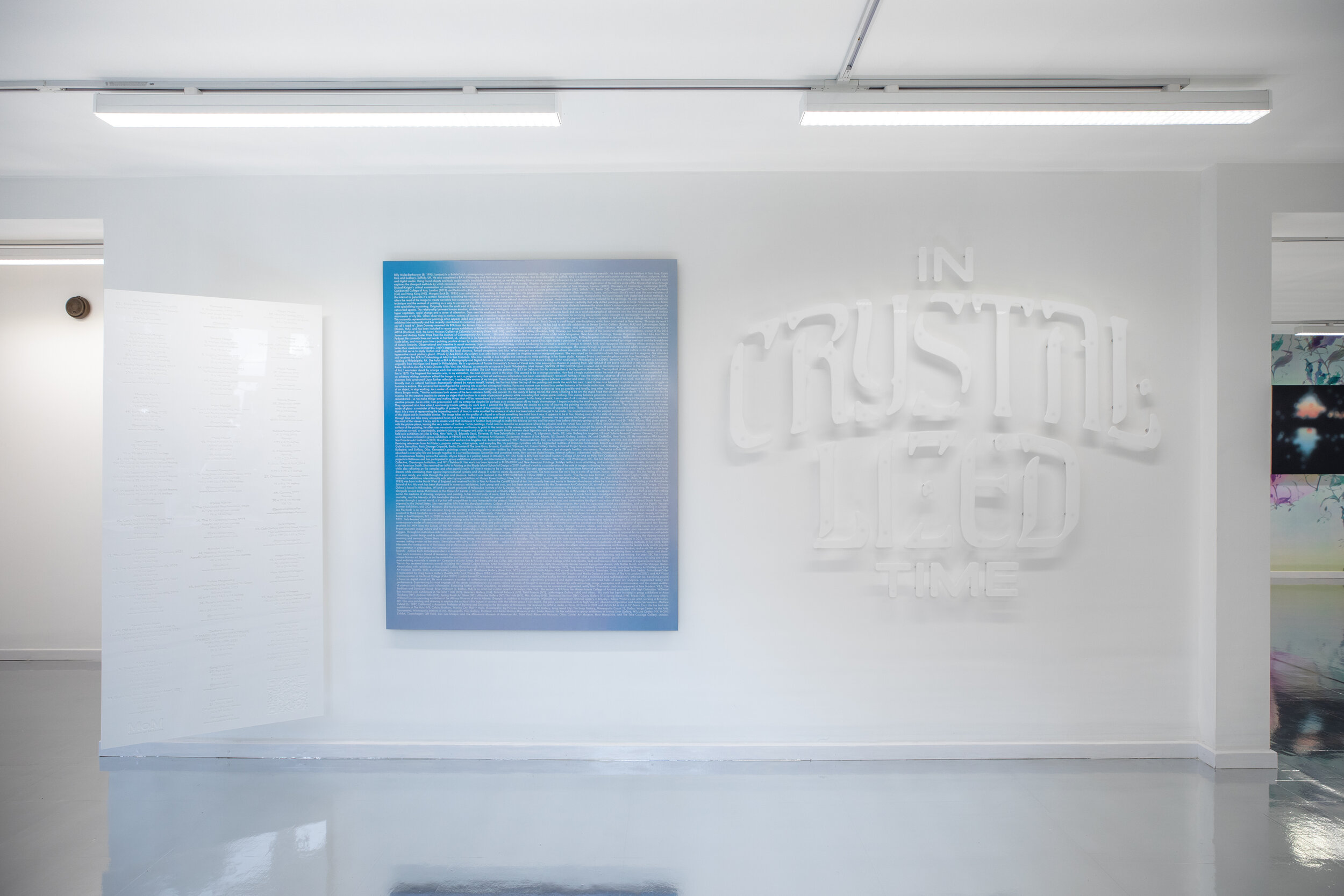
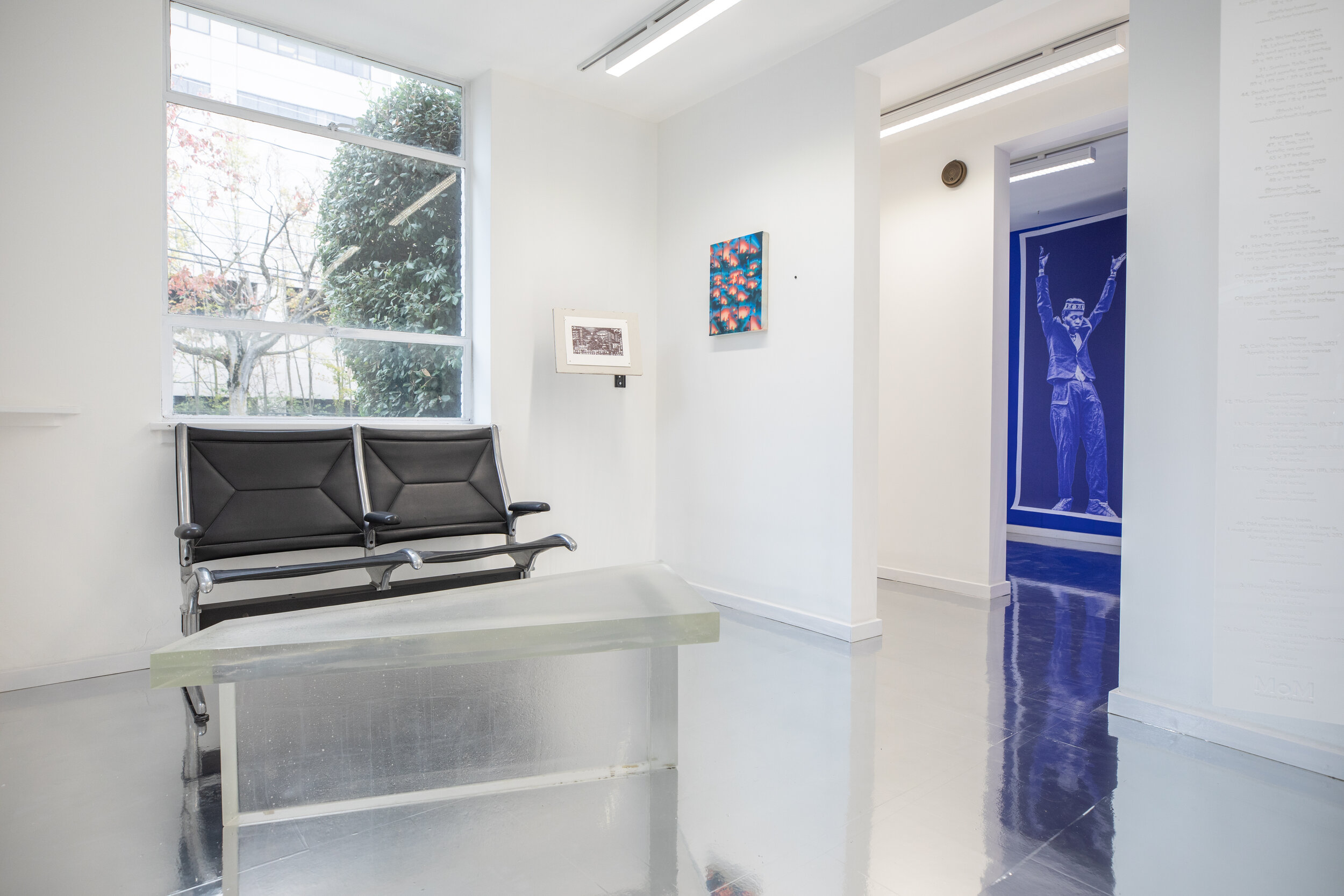

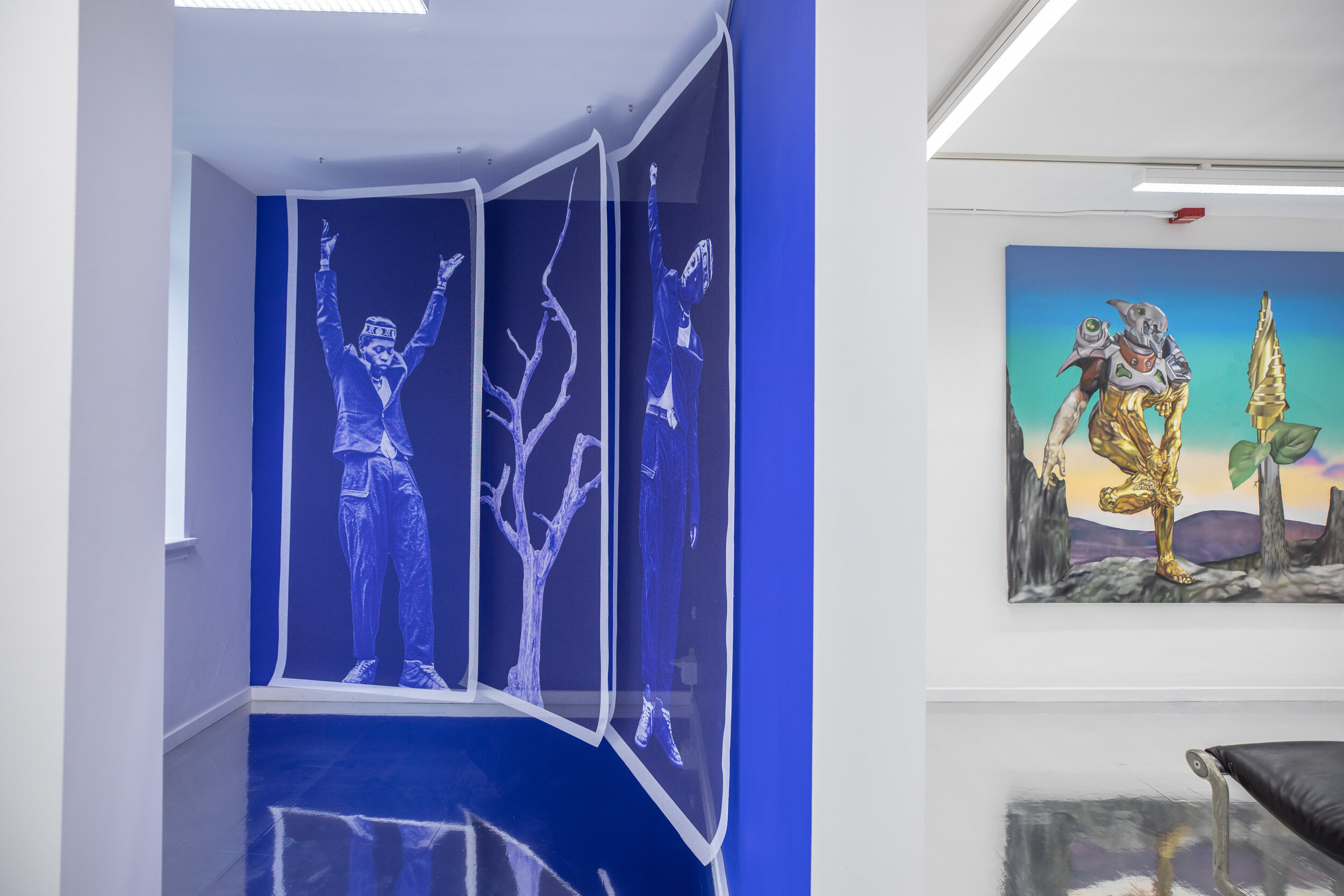
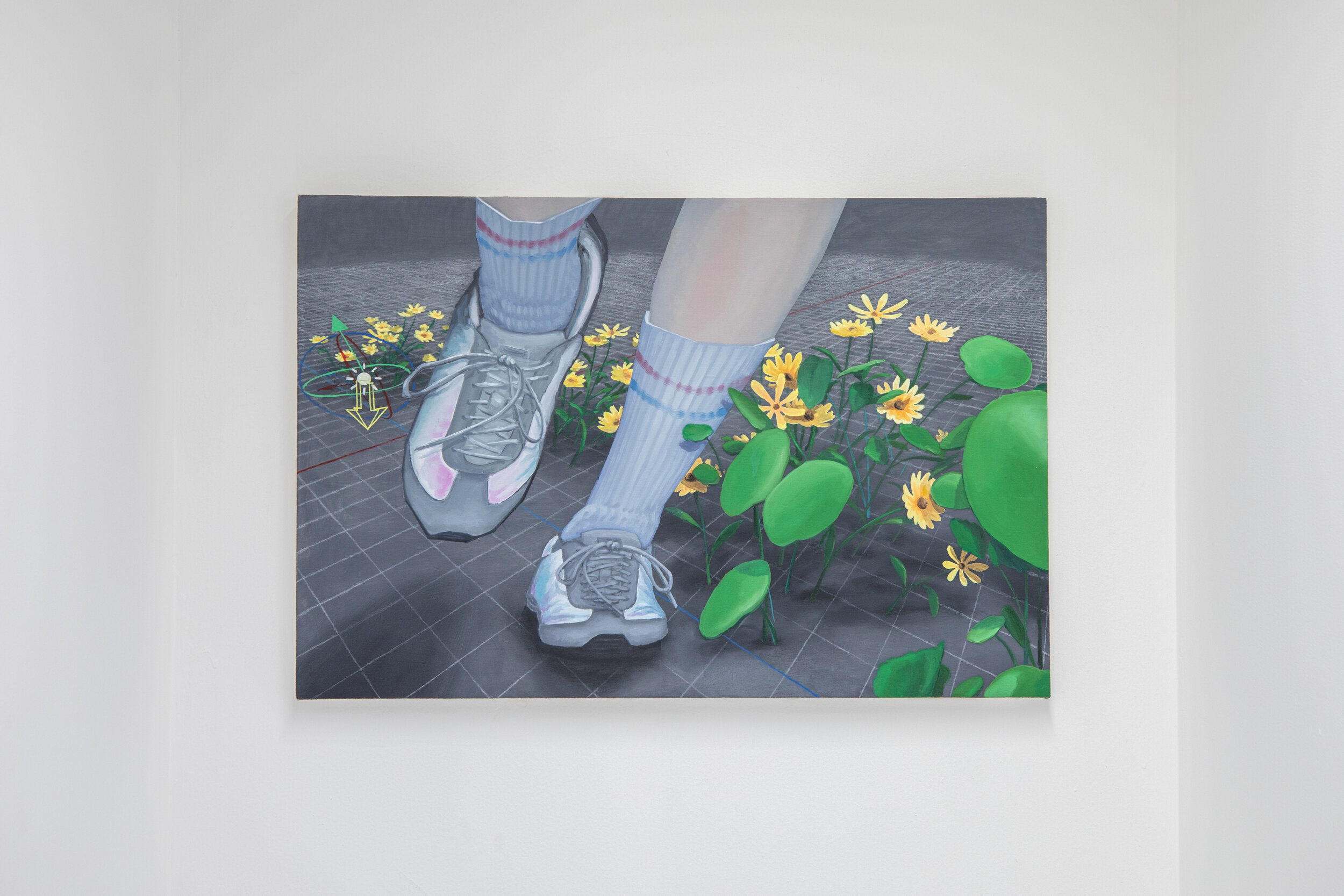
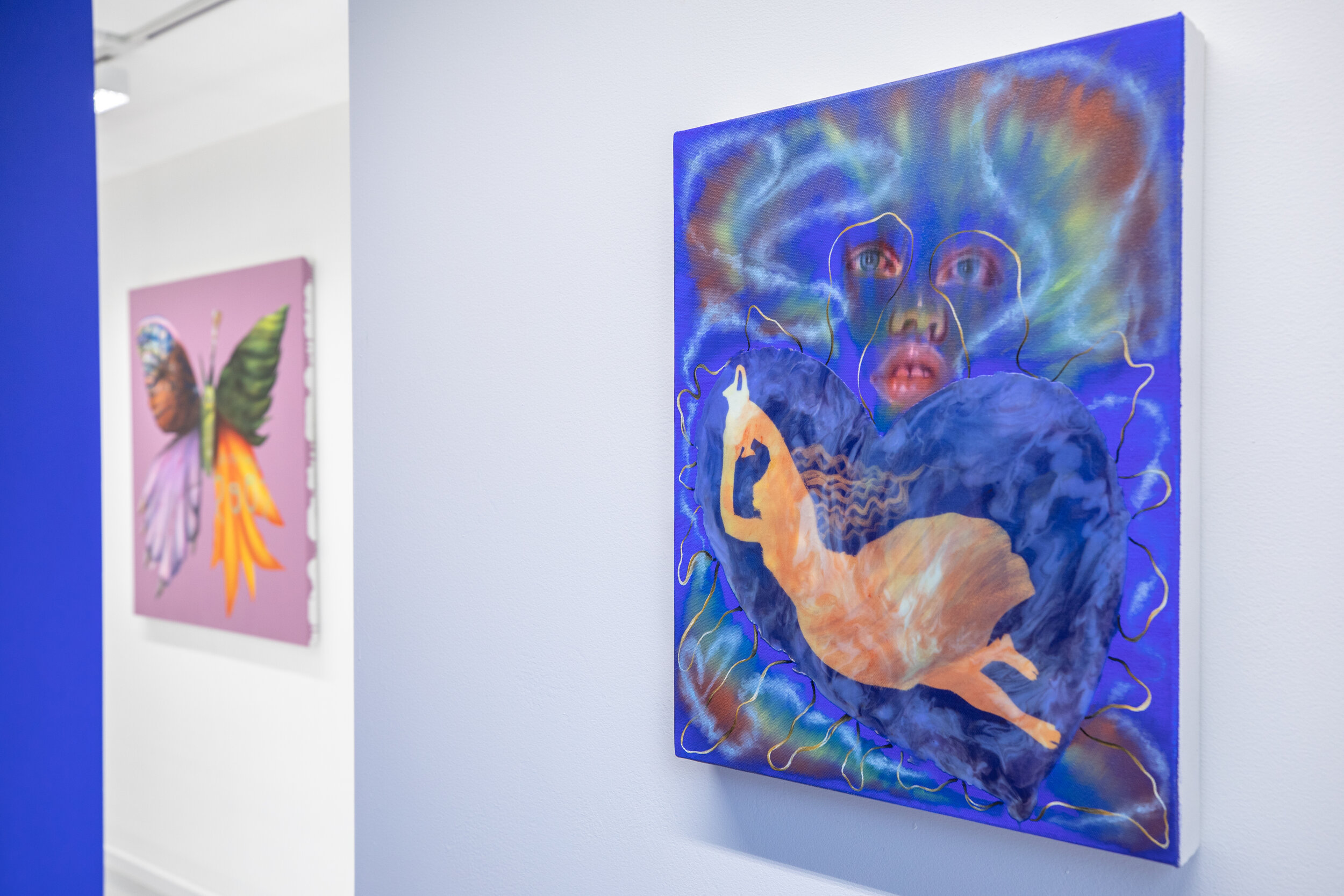
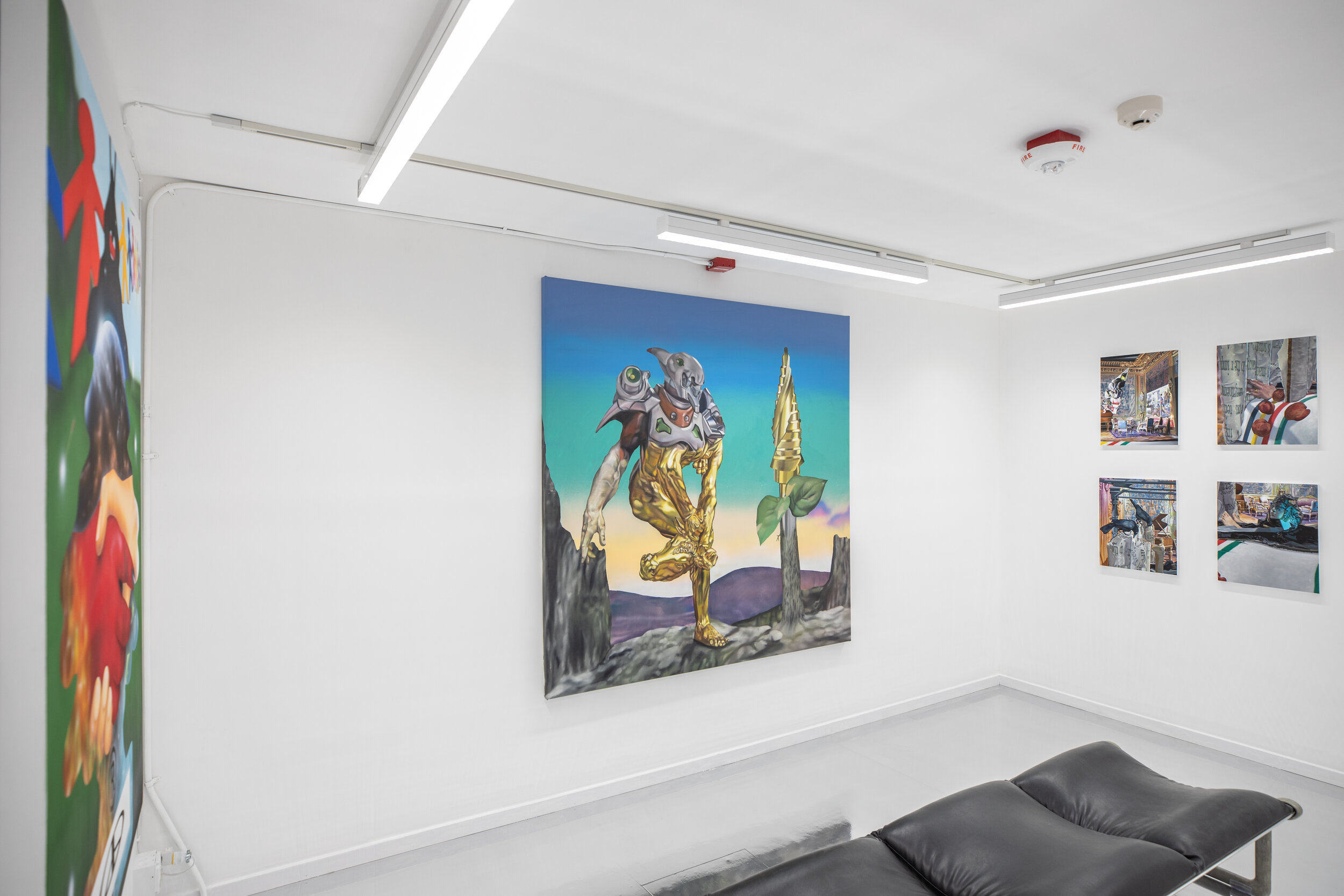
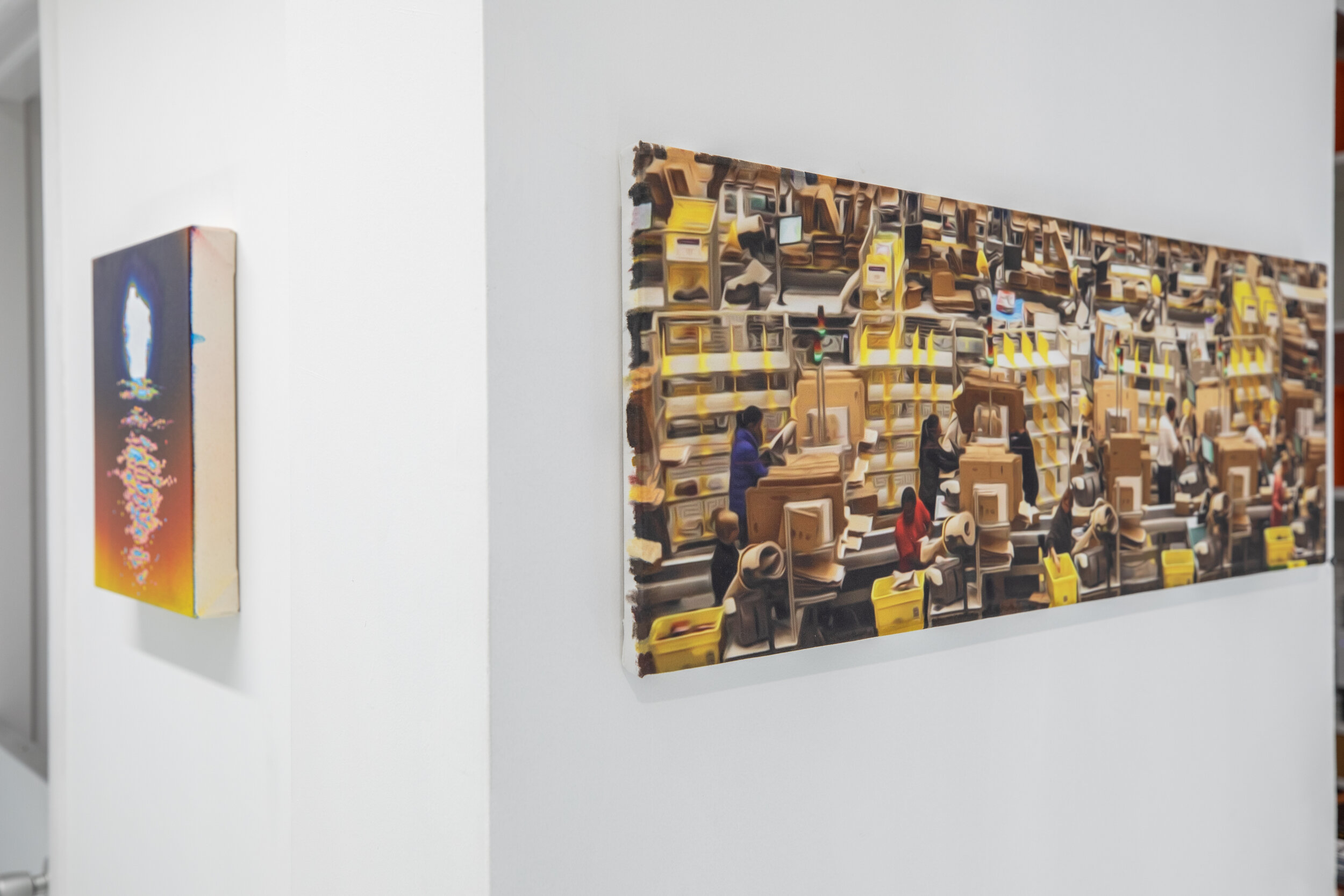
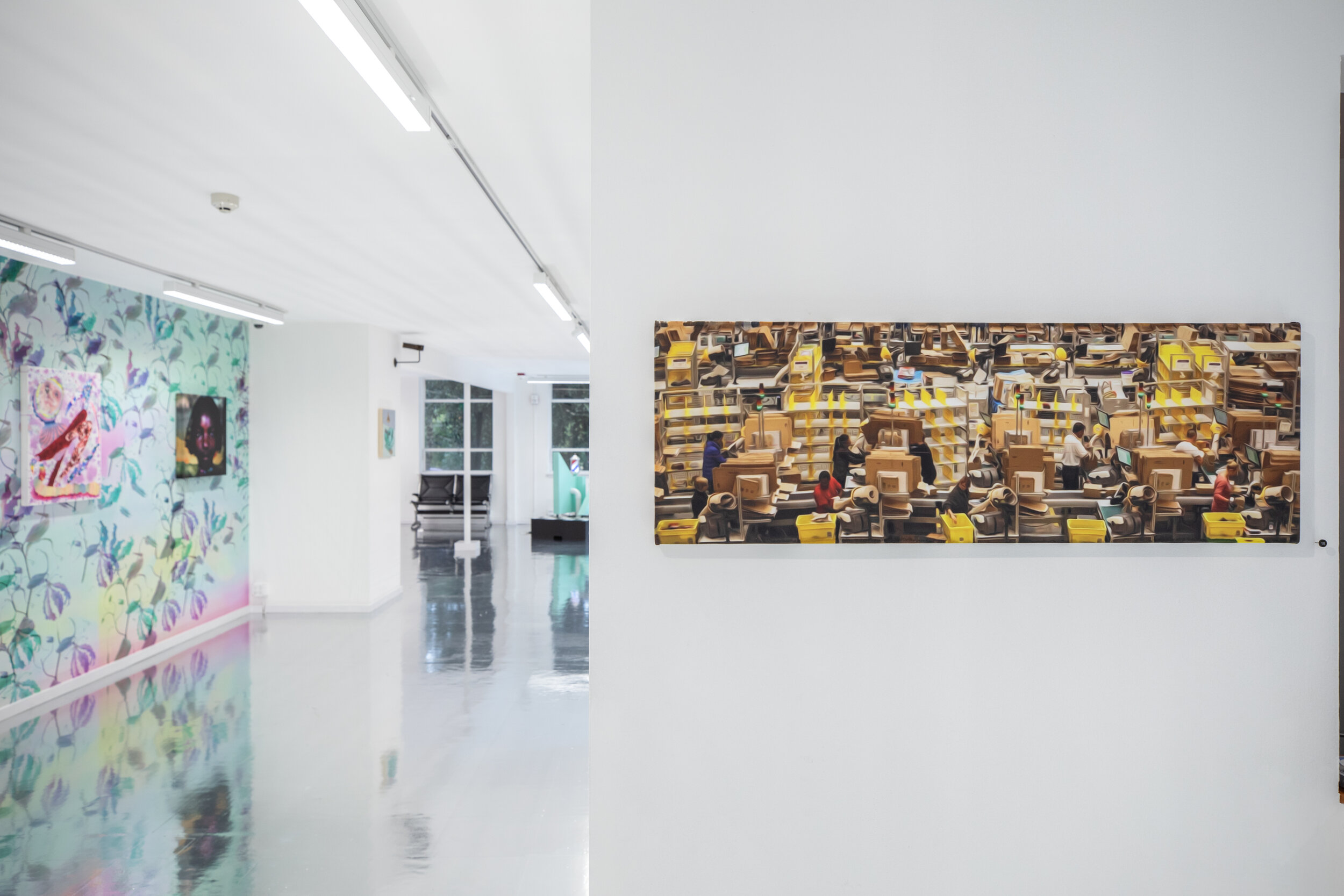
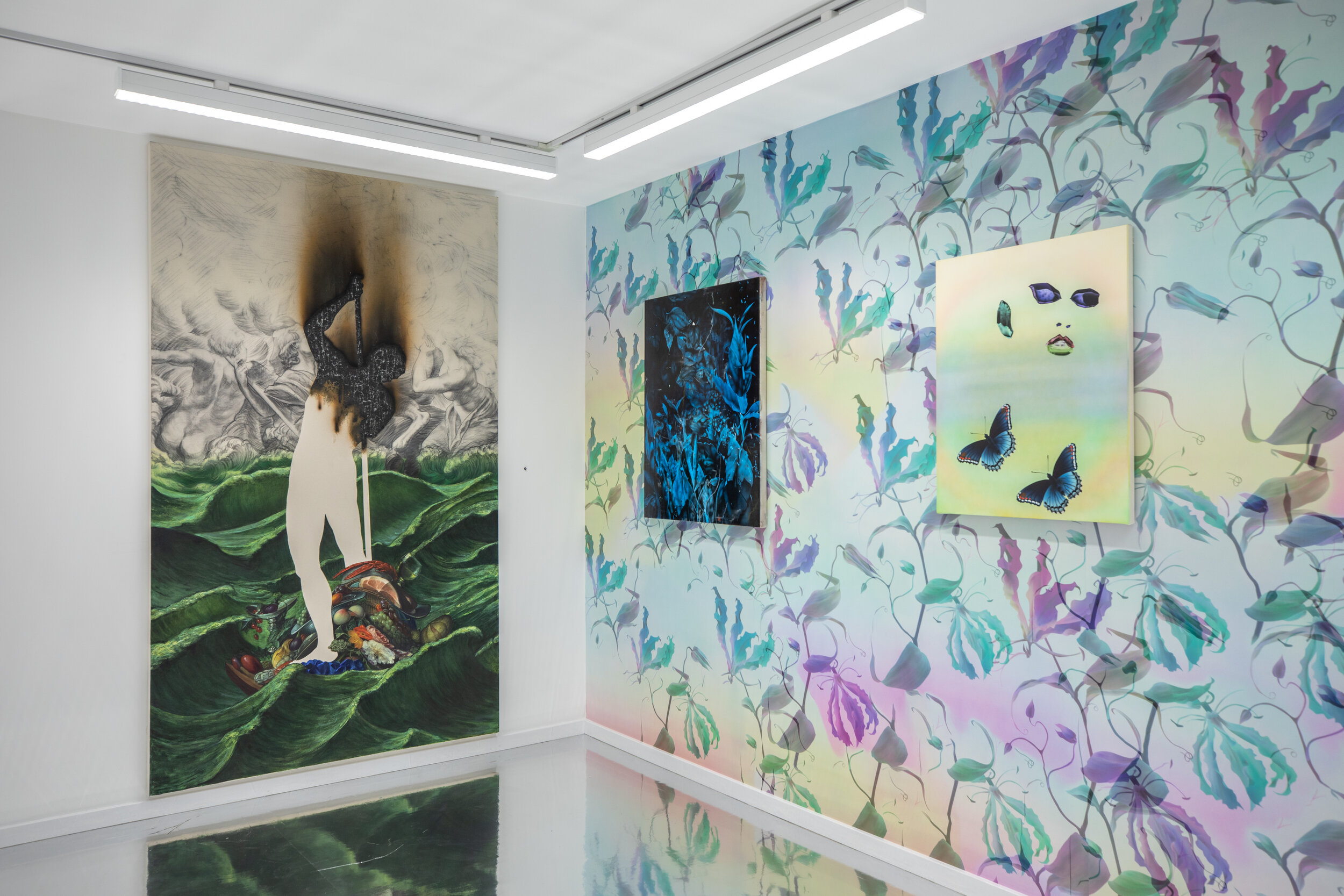
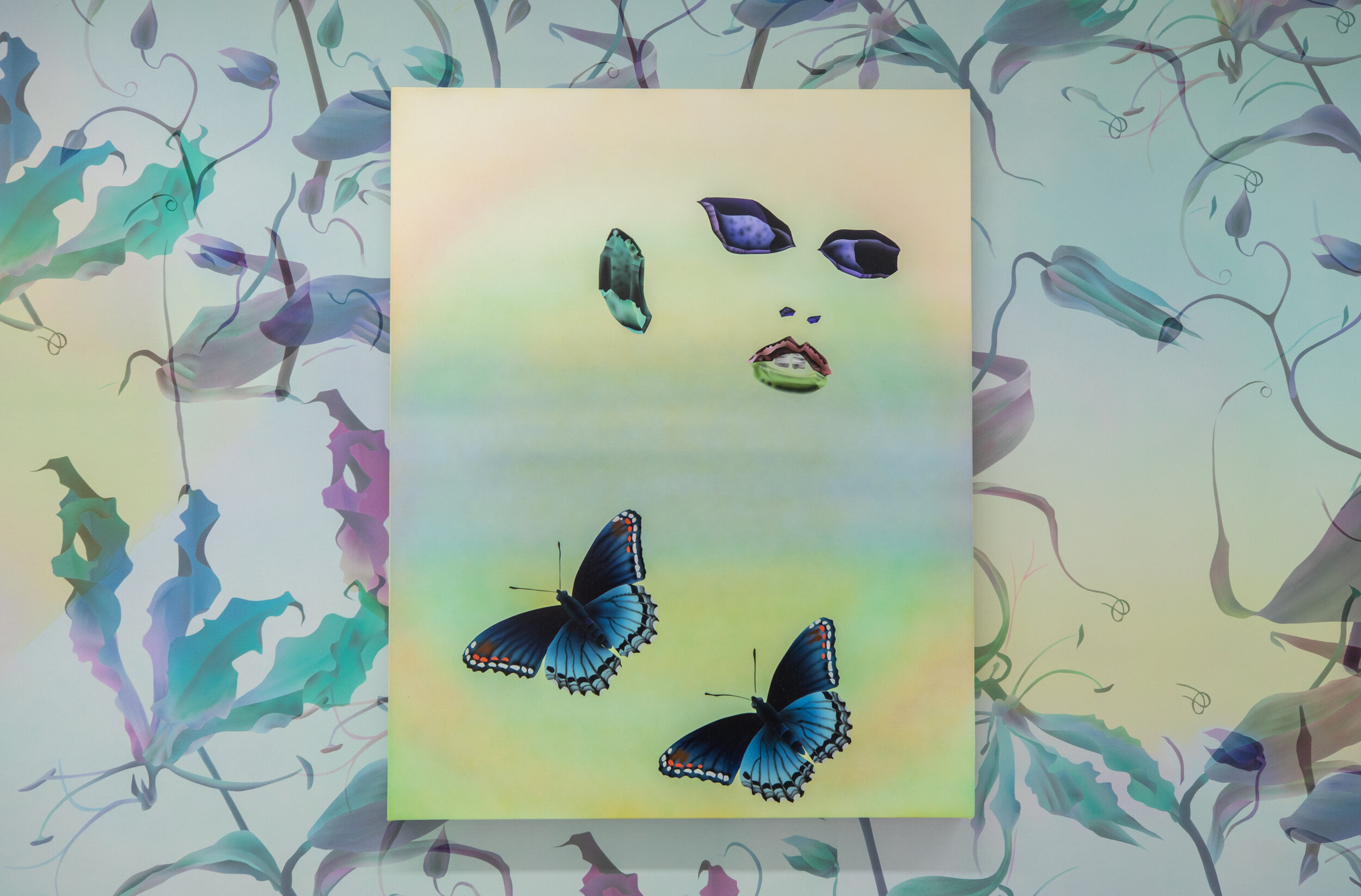
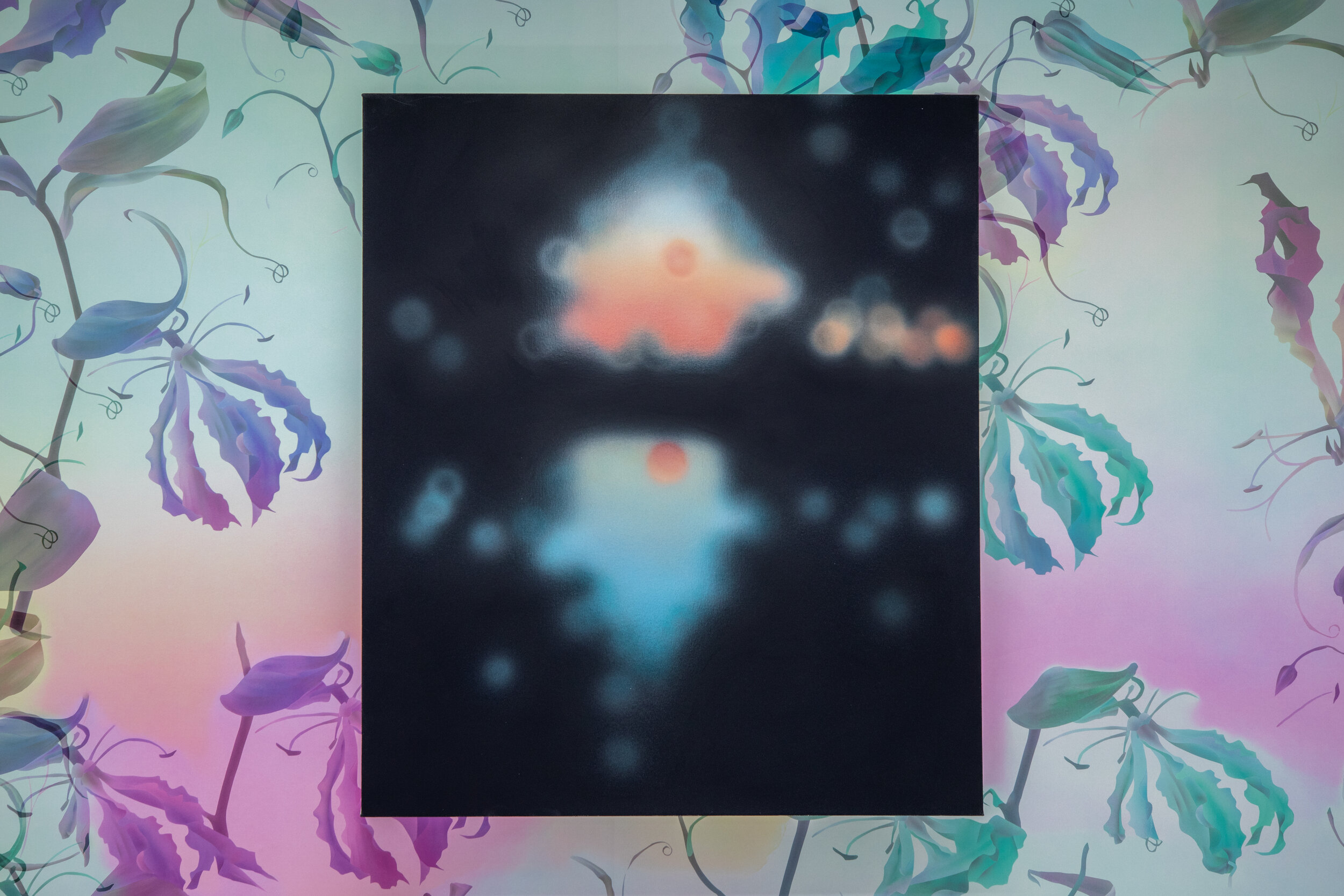
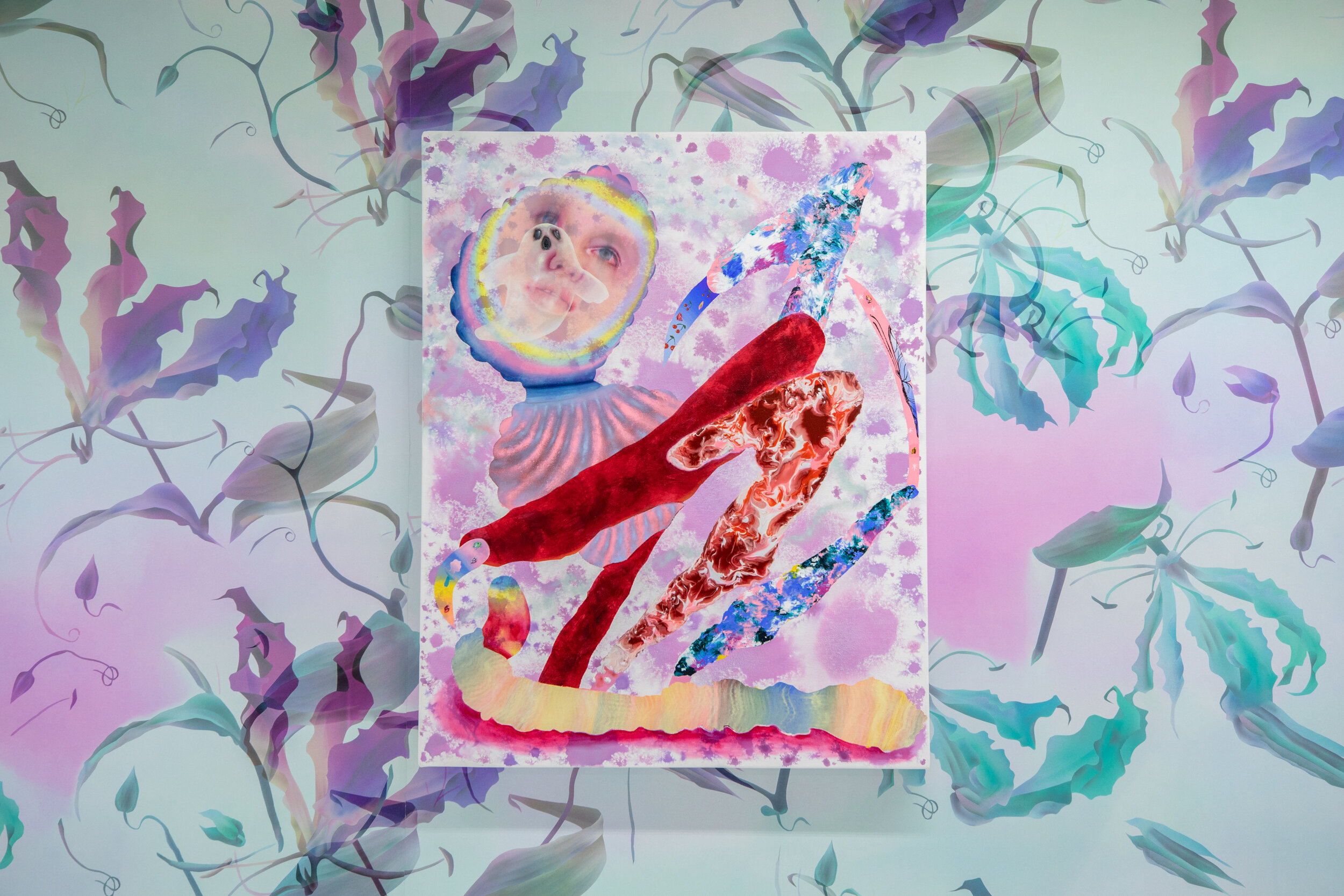
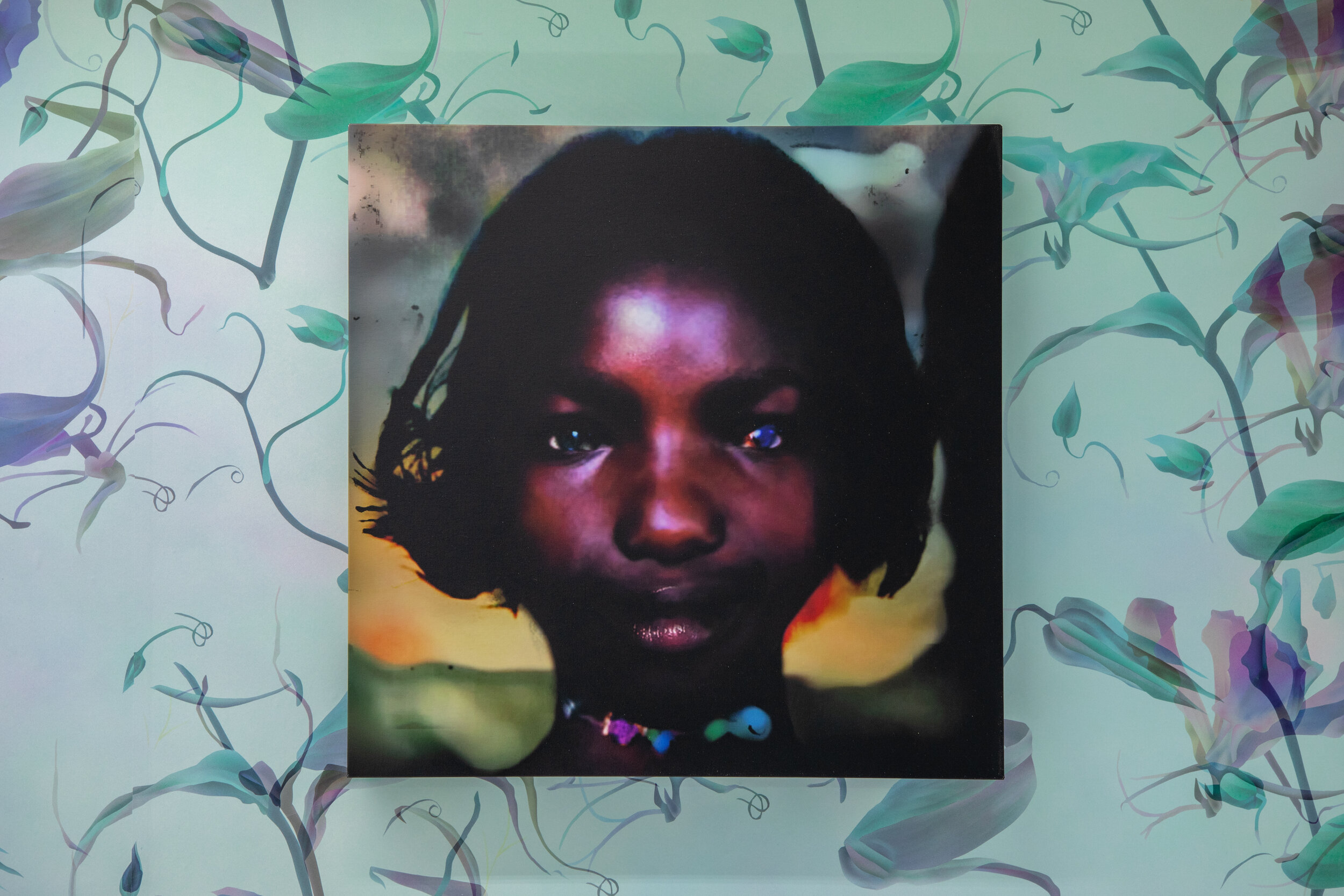
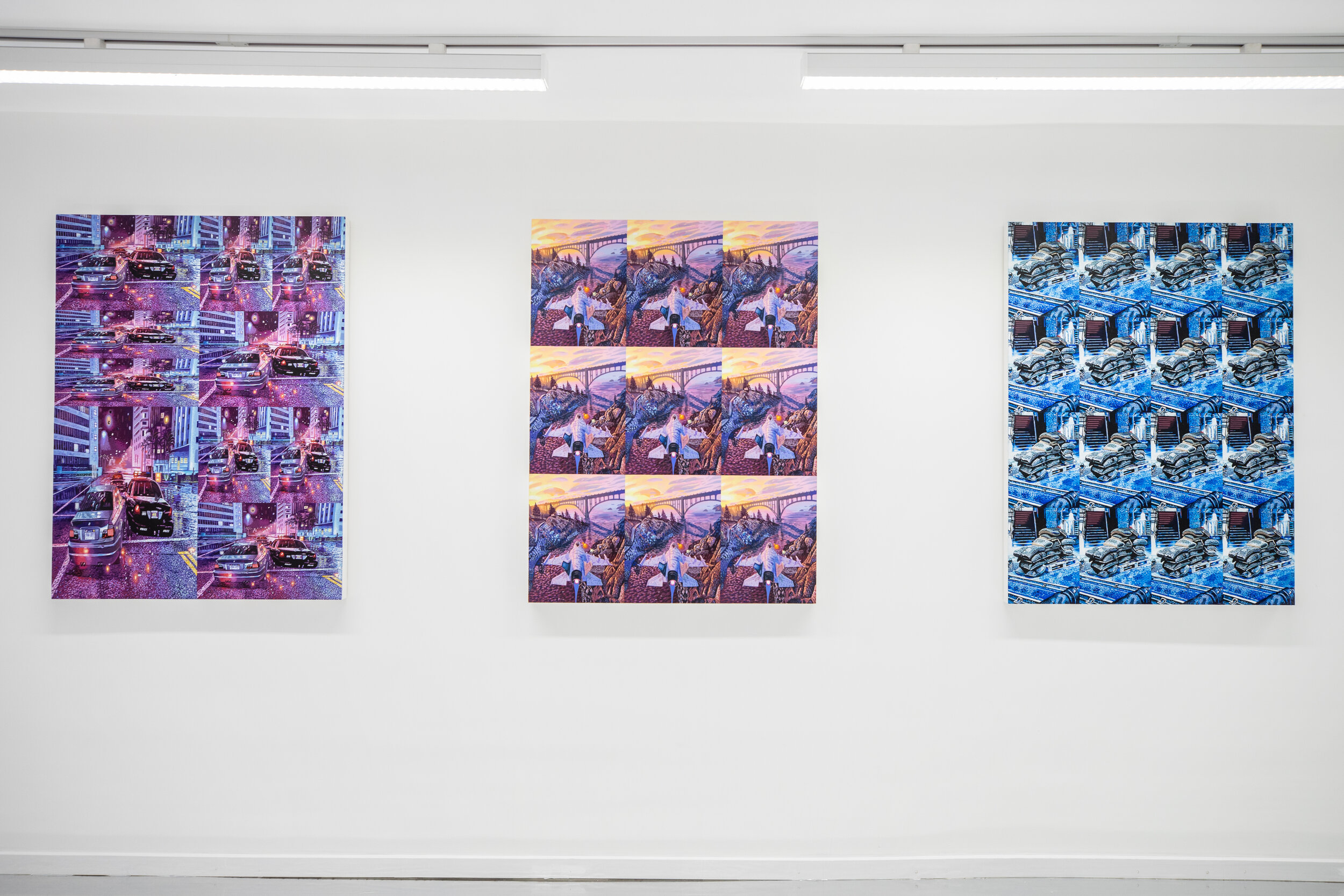
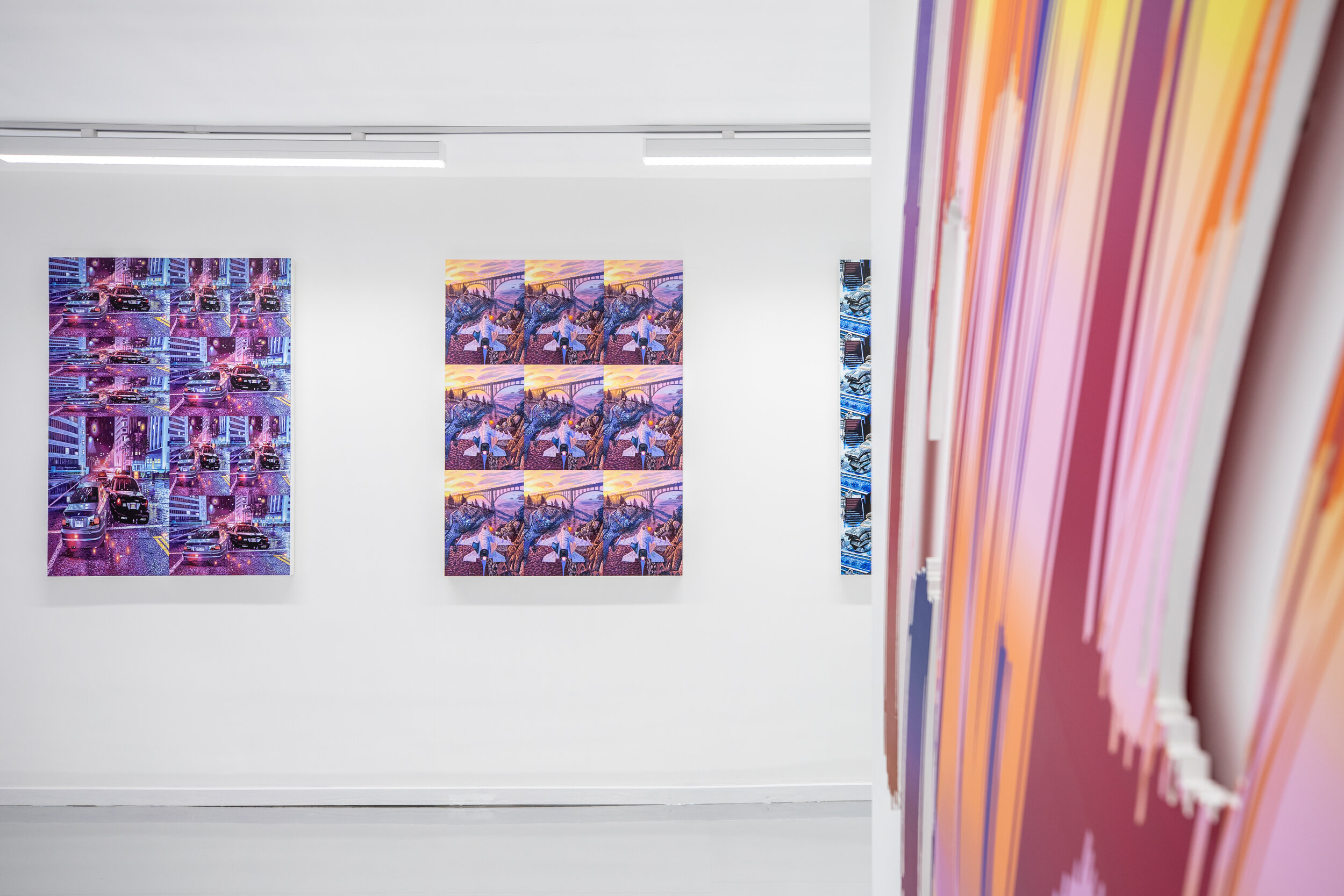
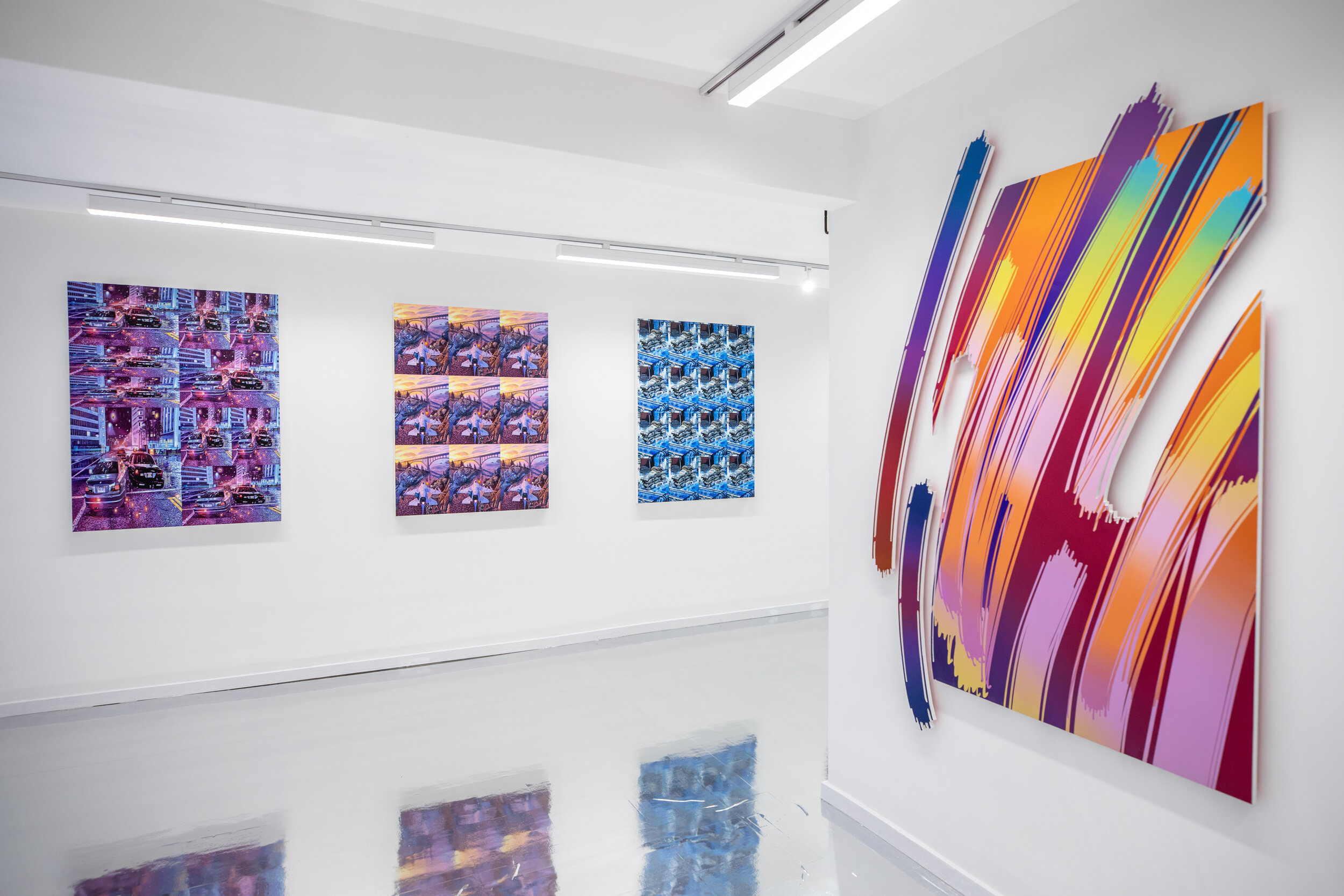
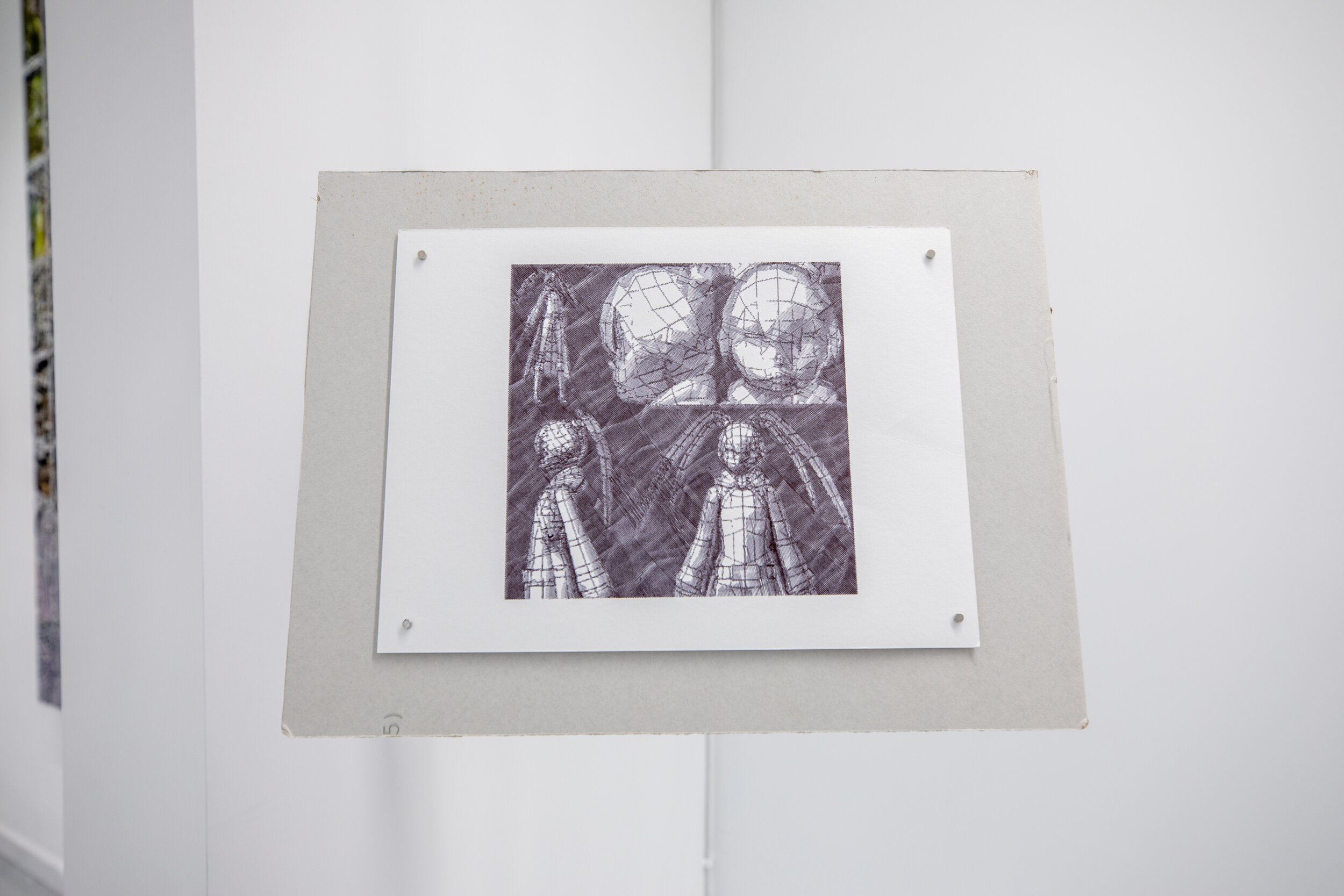

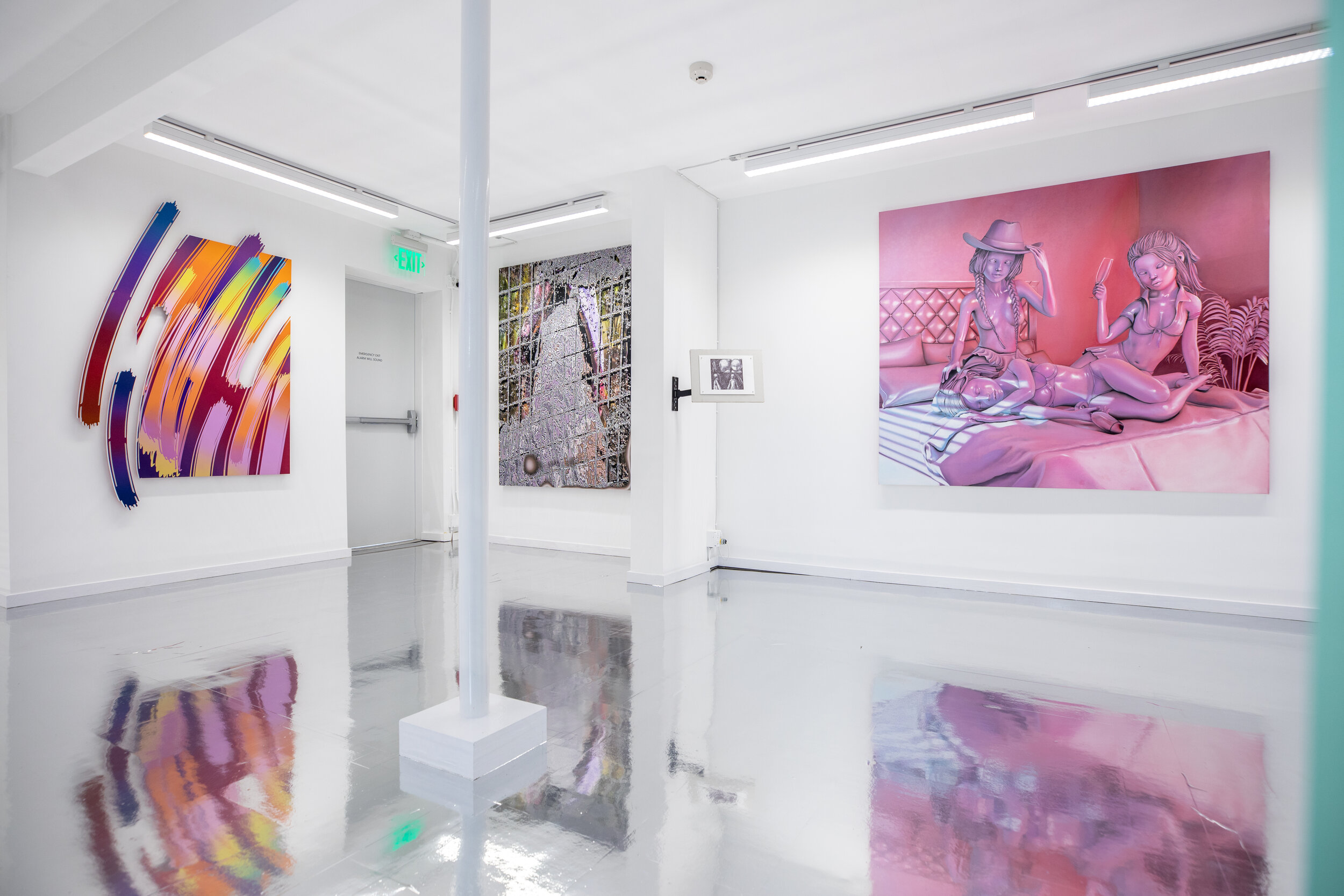
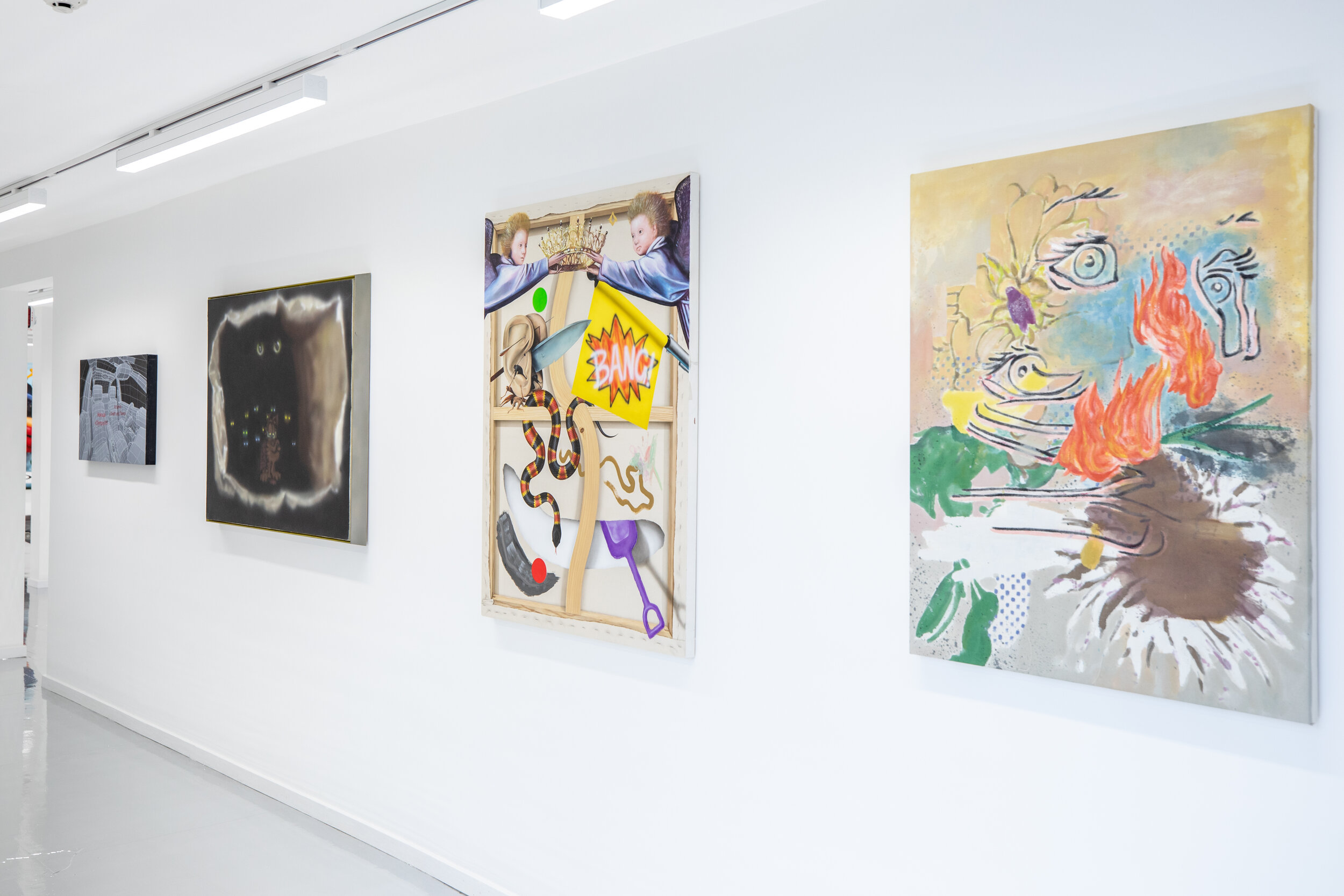
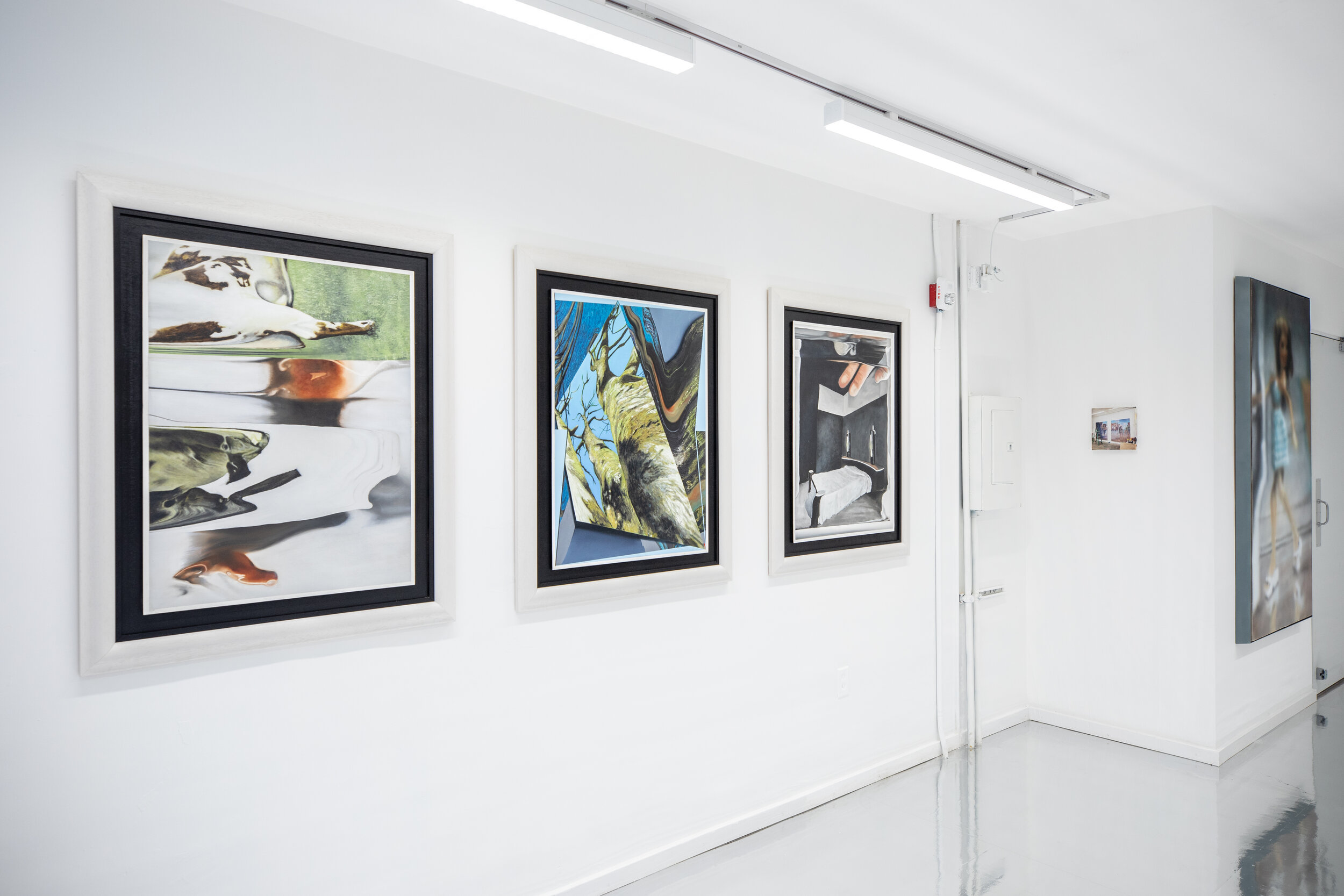
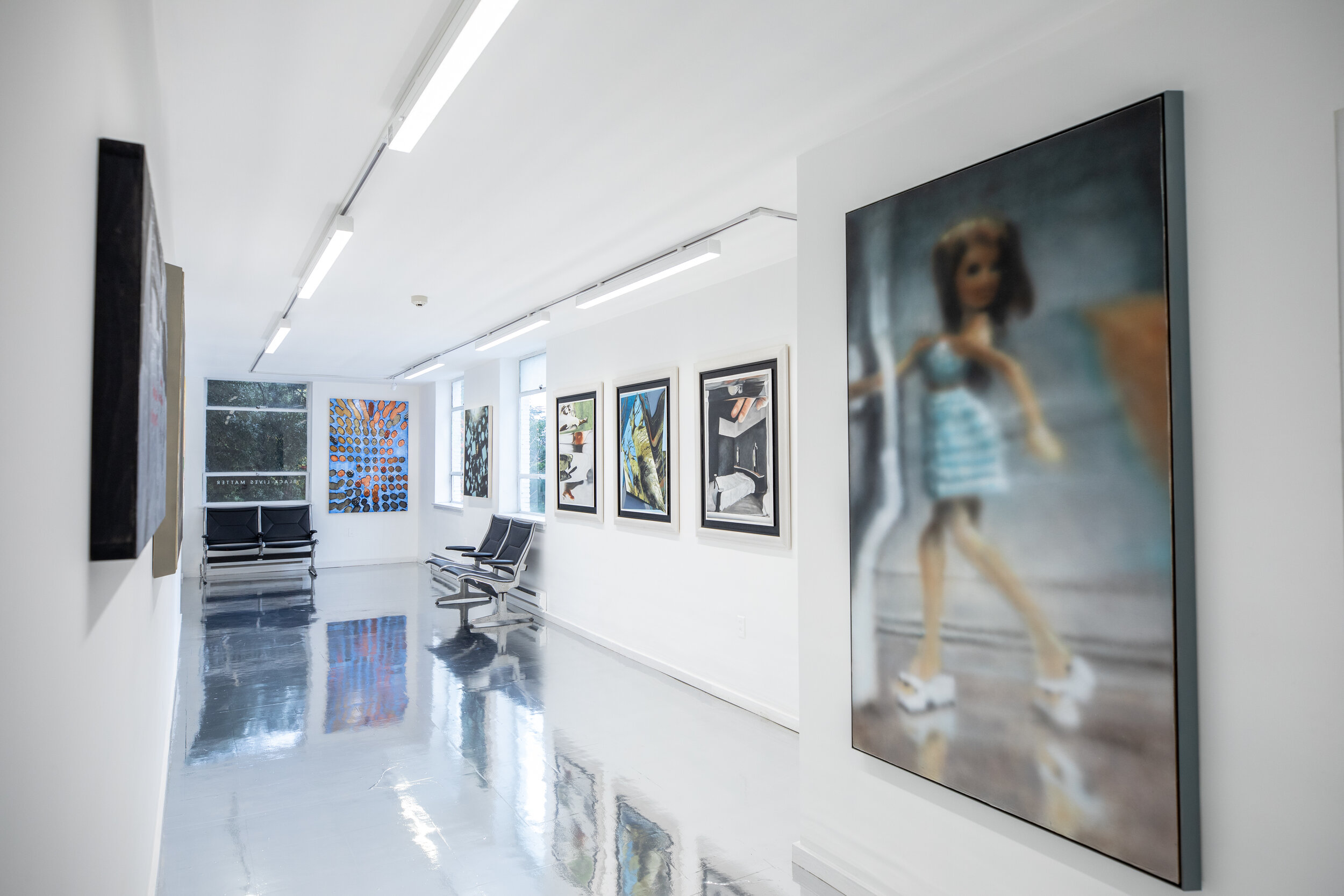
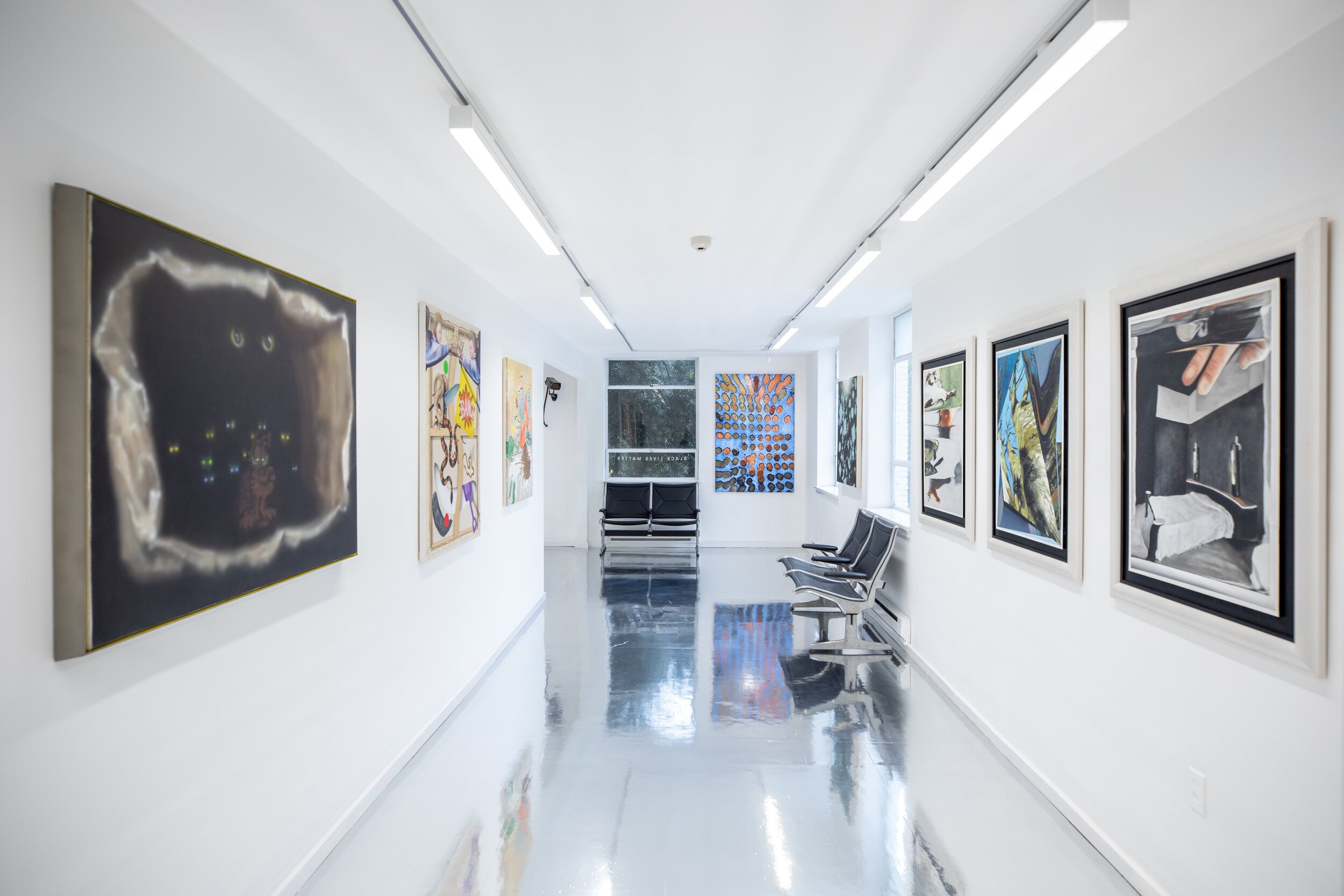
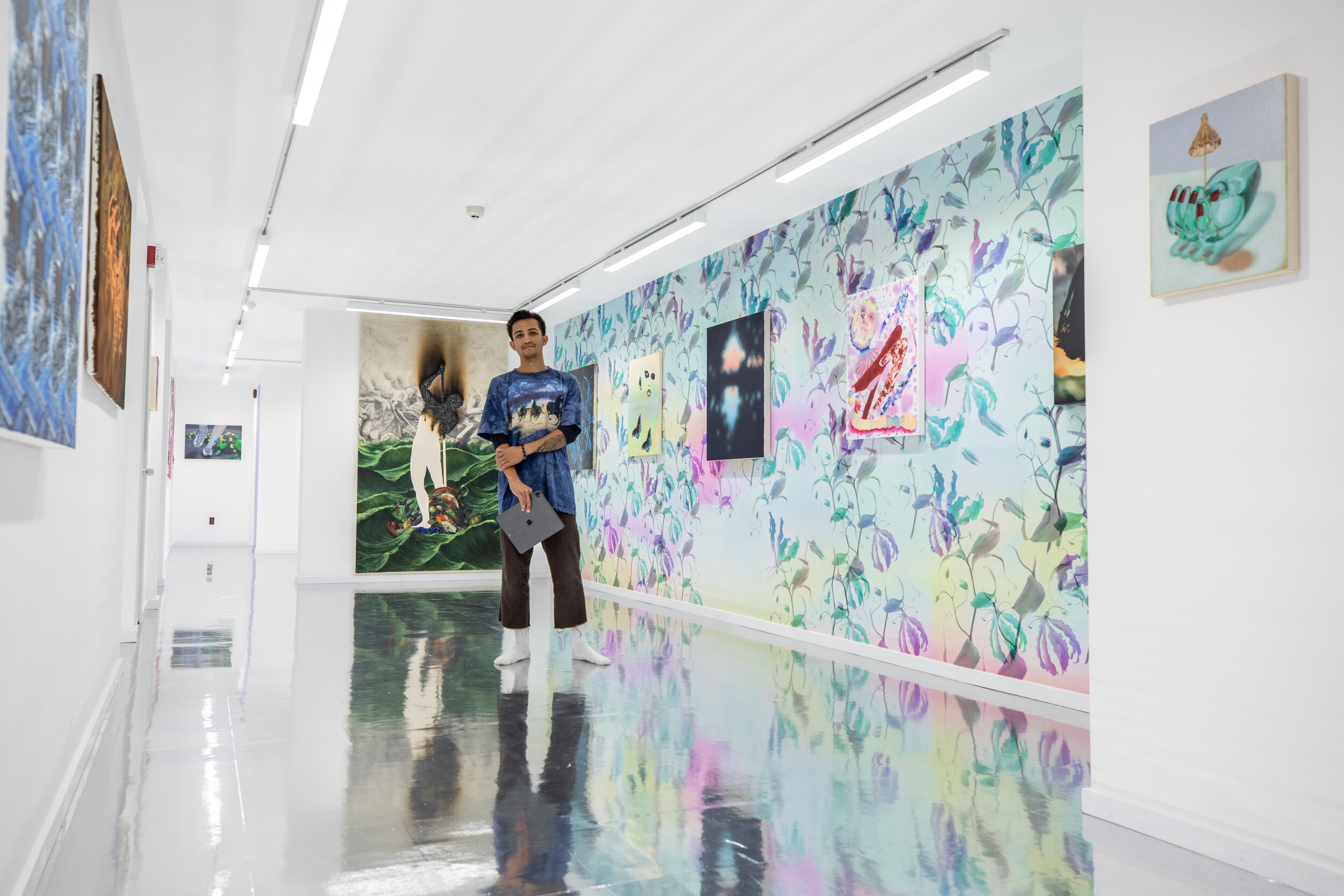
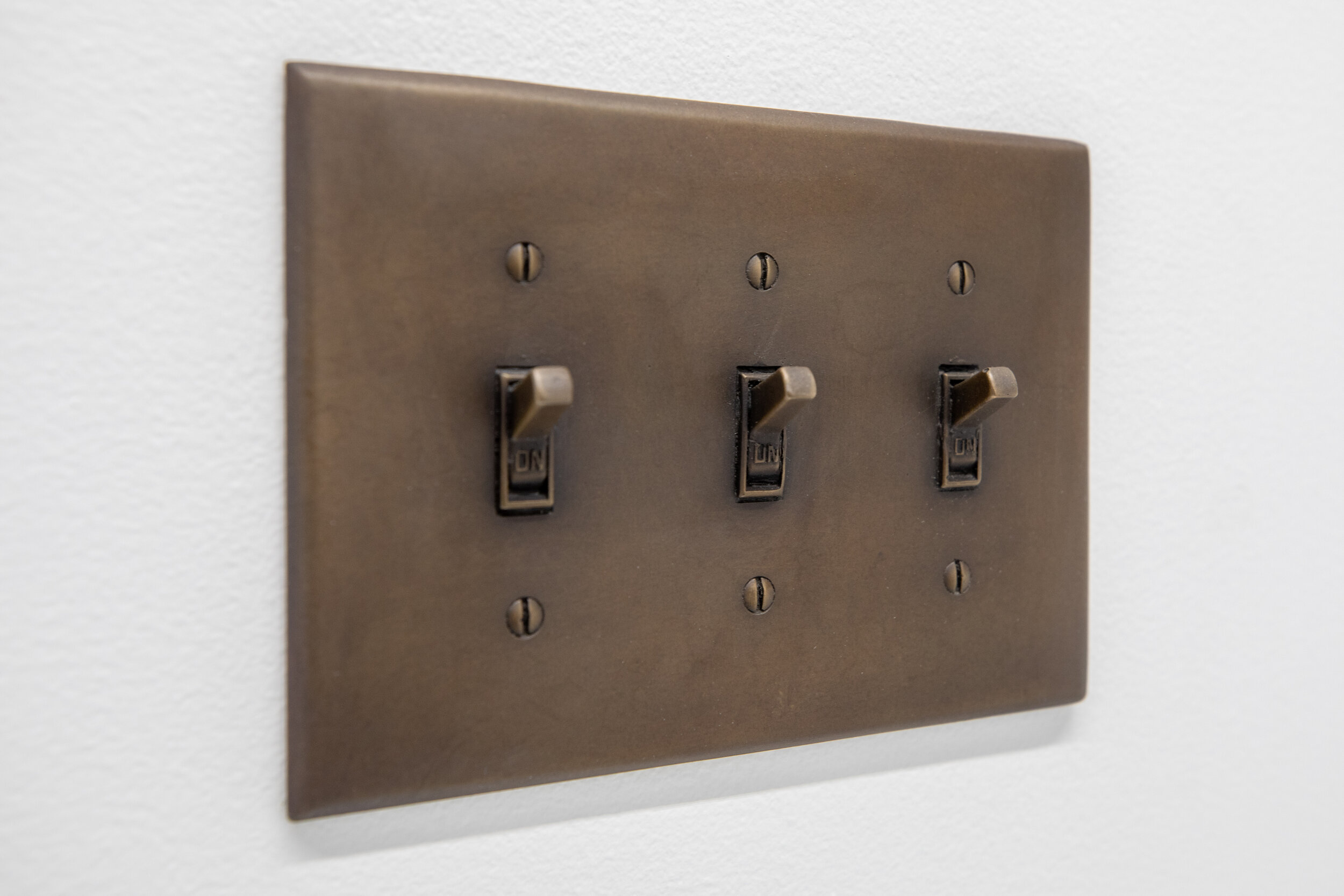
Colliding face first into a spiderweb is typically an unanticipated event an unsuspecting being is thrust into. Perhaps there is a glimpse of the fibers caught in a beam of light, not fully registered until impact, and the destruction (or demise) ends as quickly as it began; a frenzy ensues to un-cling the disintegrating fibers wrapping around the perception of reality; surroundings become blurred and fuzzy. There is tension between encountering and escaping the web. A similar tension is found between surfaces of the fifty artworks comprising Anthony White’s newest curatorial project, In Crystallized Time, on view in Seattle, WA at the Museum of Museums, October 7th to December 27th. Held on the brink, in the midst, or in the aftermath of trying to define a moment in time, the artists of In Crystallized Time give intense glimpses of ever-constructing and collapsing realities that prod at the viewer’s sense of choice.
There is mystery in our lost futures and in-between spaces. Technology offers the limitless ability to hold all of these experiences at once. We can access them, relive them, and write new narratives; often it is distorting our present. Whether actively becoming more aware of an occupied moment as it is unfolding, or conjuring the details of a previous time, definitions quickly become loose, yet specifically refined. The resolution of images in memories slip away and escape into invention. Ambiguous but crisp, In Crystallized Time presents a nexus of vantage points, pushing the viewer to follow the subtle reverberations in the intertwined structures that are mapping time as we know it.
The reflective flooring, like chrome, that covers every square inch of this exhibition's ground extends the gallery into the floor. It is a good solution for the low ceilings, while spreading the exhibition through another lens, where a viewer's line of sight extends beyond the boundary the floor typically becomes. The mirroring that occurs replaces our trust with an illusion that calls the interactor's orientation into question. The body suspends in an in-between place. In Crystallized Time is feverishly scratching at the itch that is understanding our relationship with a high-speed world.
The collaboration between human and artificial intelligence that is the worldwide web is an apparent informant for the selected works. Aesthetically, much of the work simulates spaces familiar behind screens. Desktops, simulators, video games; many of the source images seen here are grabbed directly from the screen. The pursuits of the works are deeper than a trivial goal of mimicking digital gestures, though that tactic is a common component. In a conversation with Josh Reames, one of the first pieces encountered upon entering the space, F-It, he expresses getting out of the pigeon hole that post-analog painting funnels artists into. In another conversation with Bob Bicknell-knight, I am reminded that “painting as a defining term has become a lot more nuanced, and generally encompasses anything that’s 2D these days.” Though that specific history is an automatic lens to see much of this work that is or presents as “painting,” what even is a painting when scrolling past it in three seconds? A smattering of data presented in this exhibition presents deeper, sometimes eerier senses of corporeality meeting technology, and vice versa. You have to slow down to catch it.
Before a grown understanding how a screen magically produces an image, there is an opportunity to press your face against the glass in search of answers. The gratification in seeing behind the screen and into the tube TV (as if it worked that way) is most likely interrupted by a concerned hand. Growing up to later understand the magic of the screen, there was still something vulnerable recognized in the tiny beams of light. The threshold is an entry way, though it is also a physical boundary preventing truly tangible experiences.
Works like Kenyssa Evans’s Projections present much differently on a screen than they do standing before it. Approaching it from afar, a swirl of activity is seen rising as a result of overlapping grids; the substrate for the prints is a mesh screen. Evan’s shares, “The transparency facilitates a spatial-temporal moment of reflections, in which multiple realities collide due to the activity in the space.” Revisiting her father’s documentation of her family, the images are presented in a shade “inspired by chroma key blue that you see with projectors and in spaces of production... the color normally refers to a way for the projector to tell you it does not have a signal to display, or something is in the making. This color becomes a metaphor of conscious and unconscious content.” It is in a room next to Bryant Girsch’s Running Simulator; flowers from weeds and two legs sprout from an otherwise empty and wide spreading grid identifying the terrain. There are a lot of moments throughout the exhibition where a grid is disrupted by an image higher on the spectrum of reality. Looking through the lens of disorientation and subversions, it's important to reflect on the identities attached to these experiences. Evans addresses colonialism in early technology, and the viewership and visibility of Black and Brown bodies. She describes her process to “facilitate abstractness of subjecthood, making the subject or their environment less hypervisible, close to anonymous, in control of their identity as it circulates in our digital landscape in the gaze of others.”
It can be startling when the glistening of the web tugs at the periphery of our gaze. Often it goes undetected. The screen distracts and redirects the gaze, gripping the attentions of hyper-consuming beings. A helpful and deeply connective tool during, say, a pandemic, the endless scroll of data provides an infinite amount of reasons to understand why this attachment exists. This data, like physical material, as acknowledged by Hito Steyerl in her essay In Defense of the Poor Image, is at risk of deterioration. Cracks and folds and globs of paint, a history of marks built up in many layers revealing itself to the viewer might be registered as a flaw to the surface. However, the inevitable glitch is an idea that is leaned into by the artists across the gallery. It is the glitch that breaks the line of sight; the physical and digital realities are straddled for an instant before it slips in one direction or the other.
Soft color palettes, application processes, and substrates skirt otherwise harsh imagery and edges. In one room the viewer encounters three smooth bodied women having a sleepover in Sleepover, a painting of a soft pink world by Emma Stearn. Their idealized bodies in cyborg skin give sexy, playful, and suspicious energy; one character collapses on the bed, no sign of life in each pair of pupil-less eyes. The lack of brush strokes pushes the suspense of simulation. Nearby, Jack Warne’s dye sublimation on velvet holds an invisible chaos, resurrected by an interactive filter for your smartphone. The frenzy of pixels in a blurred grid, over what looks like the underbelly of a skirt mid twirl, feels like a screen pinned down by an applied pressure. Untroubled exteriors become a plush playground for the eyes.
Some warping feels more familiar, like looking through the crack of slightly open eyelids, looking at a bright cell phone screen in the middle of the night, light ricochets in a vulnerable, unprepared eyeball. Struck at times with abrupt texture or color, Alyss Estay’s paintings are quite literally “influenced by photo lenses and the ability to view life through a piece of glass.” Says Estay, “my colors tend to be punchy because I need the viewer to feel a certain sense of unreality to the image they’re taking in.” Saturated instances and folds in the skin of the work are places where physical reality teeters. In the infinite invention of place presented by each artist, through lens or screen, they share their sensibilities for world-building; largely influenced by but not entirely dependent on the vast depths of culture that exists online. The internet as a medium purports to be a great equalizer, but there is an addiction to be navigated in the abyss.
Many pieces feel they are on the precipice of diving into an abyss; dark interiors of a bag are filled with glowing eyes (Morgan Buck’s, The Cat is in the Bag), a butterfly catches a glimpse of itself in a car window covered in stickers, unable to peer into the cavity of the car (Aaron Elivs Jupin’s Did You See That…[Backseat Driver]), and a jet hovers far over a deep sunset valley in Grand Theft Auto (Mathew Zefeldt’s Jet and Bridge). The latter is not the only instance of an aerial view in the exhibition (as can be observed in Sam Creasey’s Runaway), it activates a repeating loop as he hits the viewer with the same view nine times over in a grid. The single frame is like a carbon copy of the prior painted rectangle, capturing the same intense details like it were an advanced paint-by-number. In Zefeldt’s piece, Heat, the scene repeats police vehicles cornering a car driving in another simulation game, but this time the repeating scenes stretch to fit wider and narrower frames, like minute glitches. I anticipate movement in each frame, but the automobiles idly sit in their fixed positions of chaos. In a conversation with Zefeldt, he shares how he is drawn to moments right before or after violence; the places of confrontation in the simulation of a game. There is a privilege to examine a world of violence in a controlled environment, as an avatar with no real consequences.
In Crystallized Time spins wildly complex forms and slippery scenes brimming with nostalgia, anxiety of the present, and uncertainty of the future. The web might appear as delicate and penetrable, but has the strength and potential to exist undisturbed. If detected before impact, the glimmer of its fibers in the light, it cannot be confronted without acknowledging how individual existence is perpetually impacted by the coexistence of others; building wild futures together.